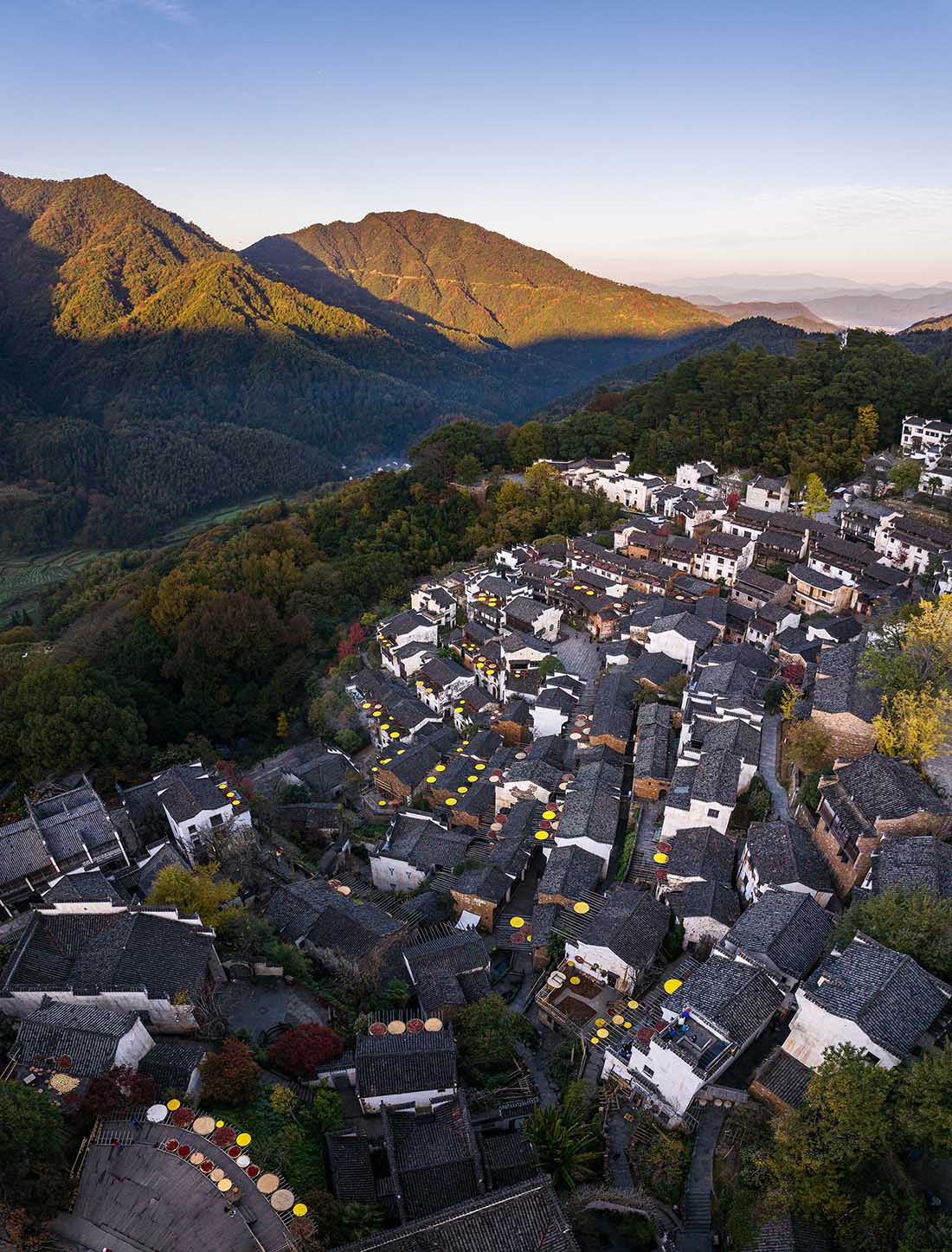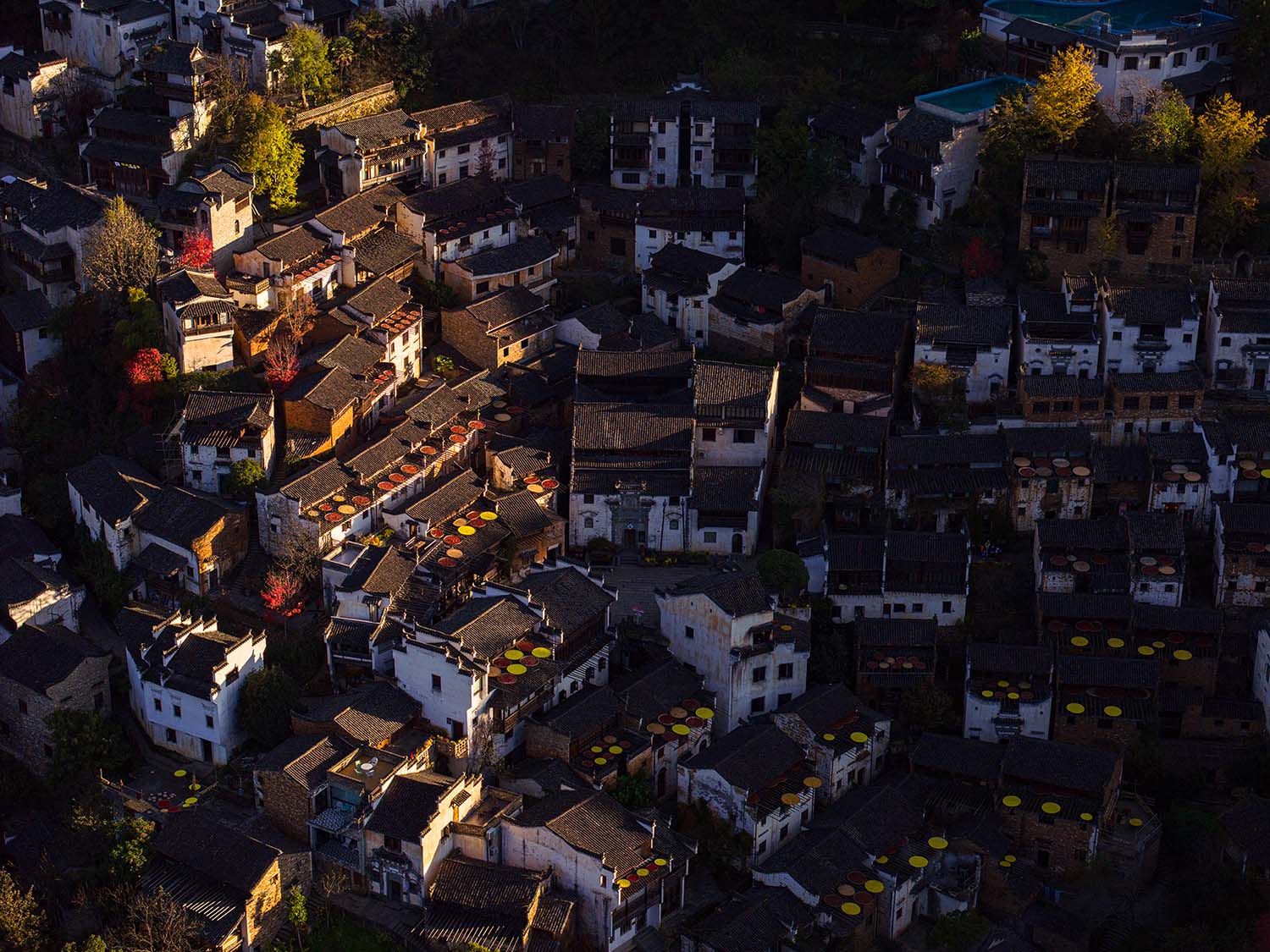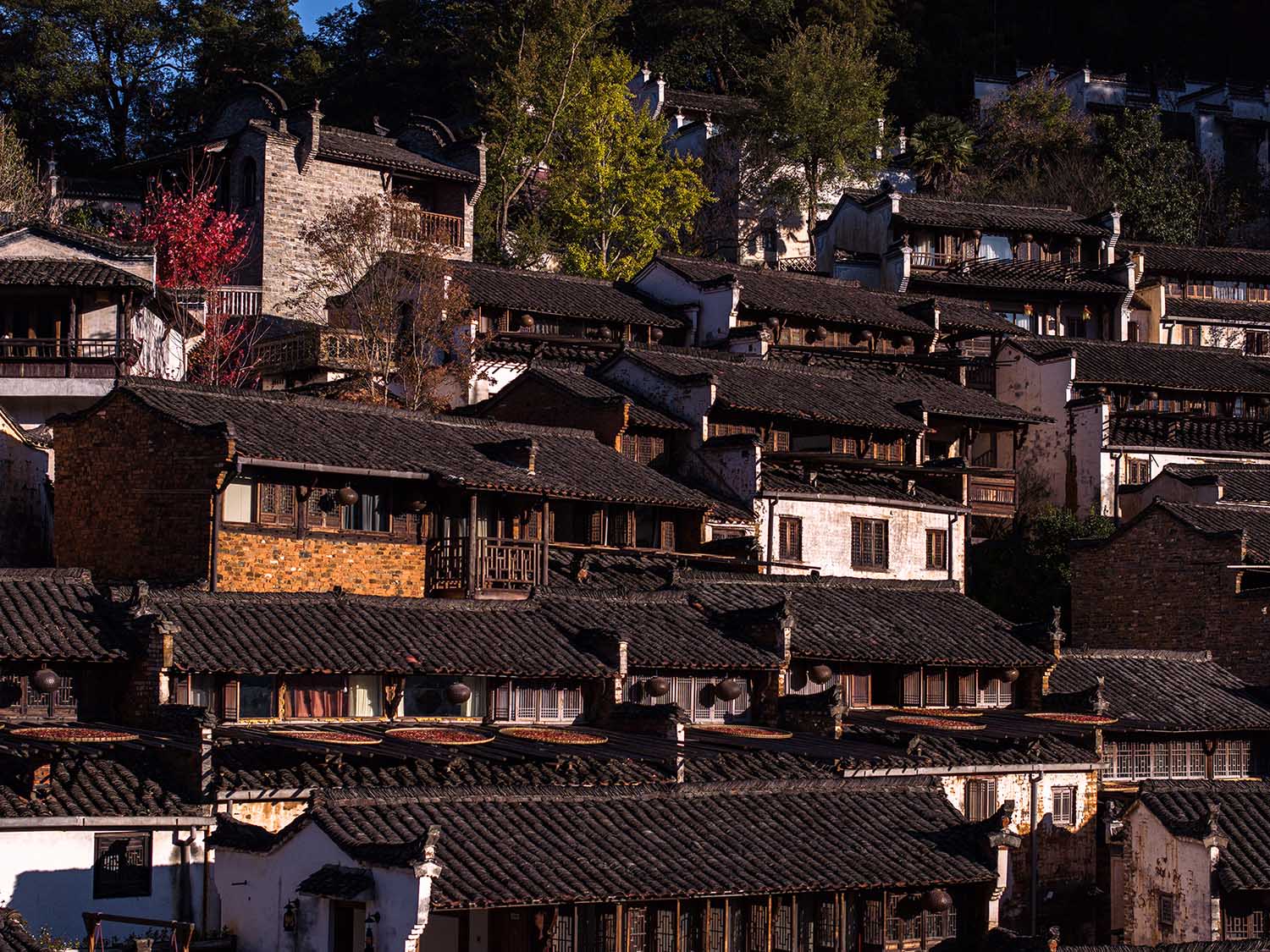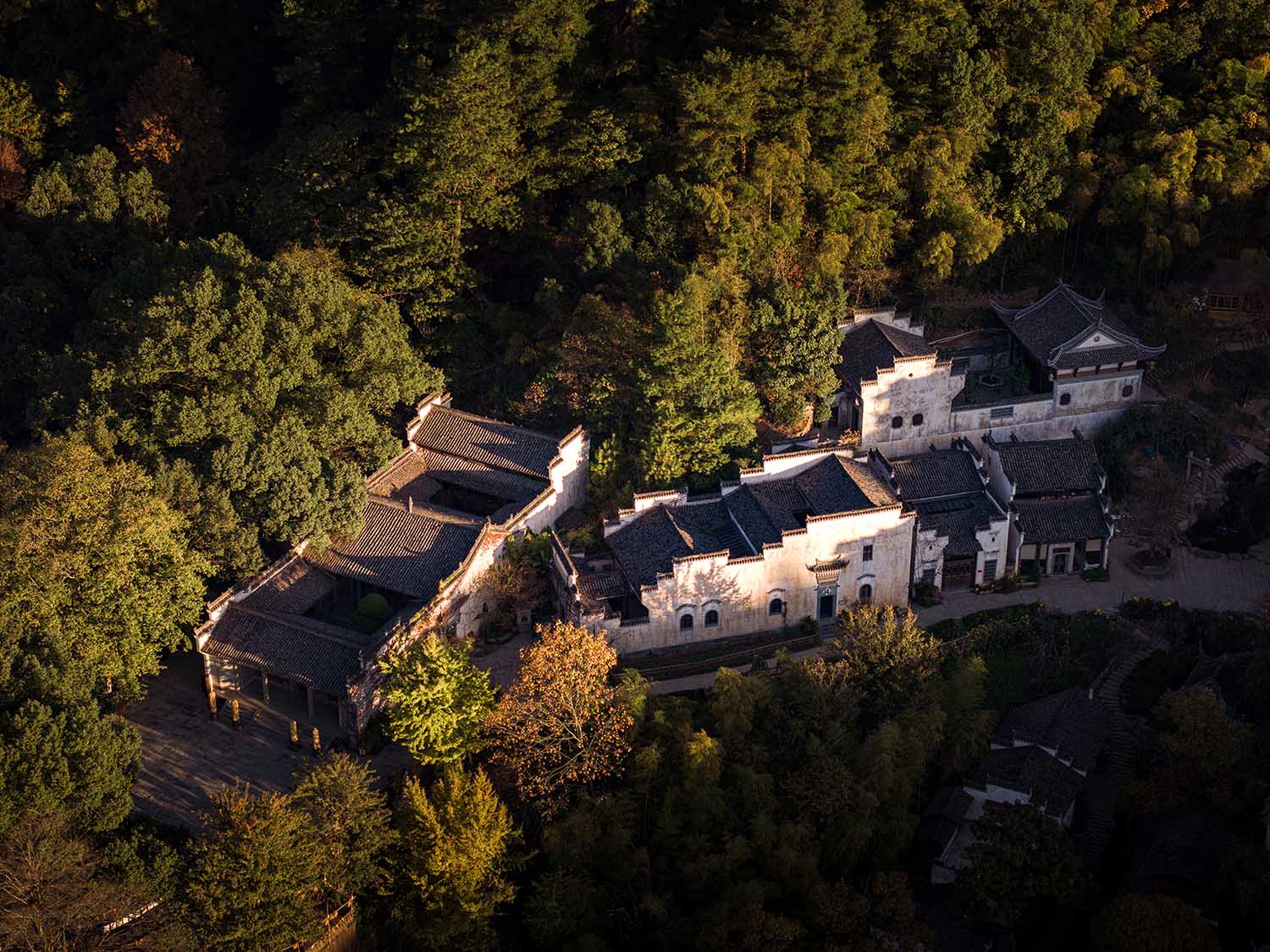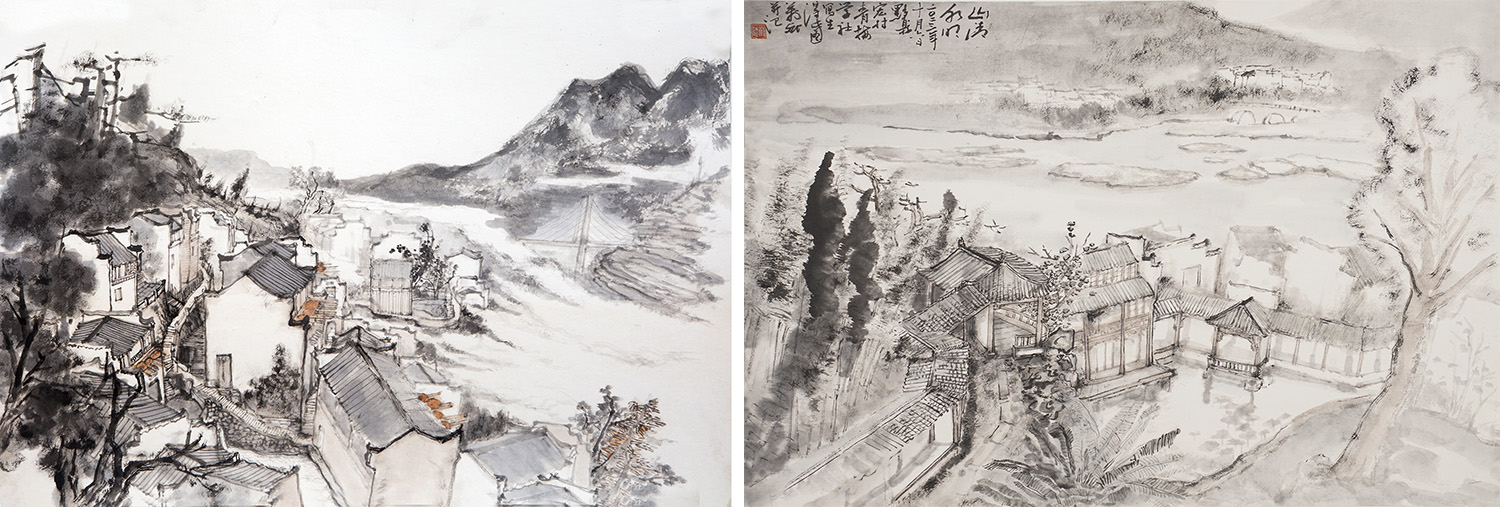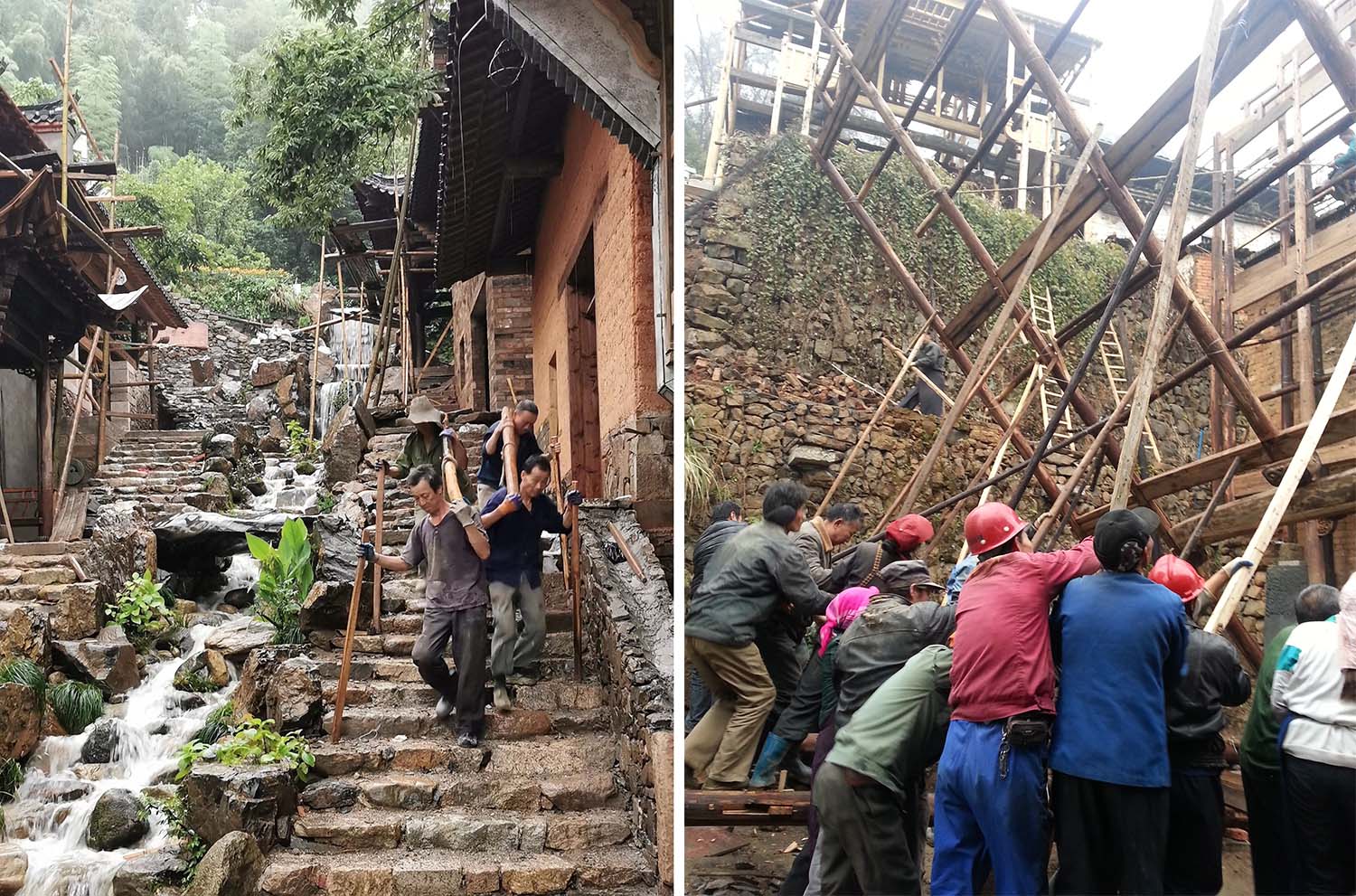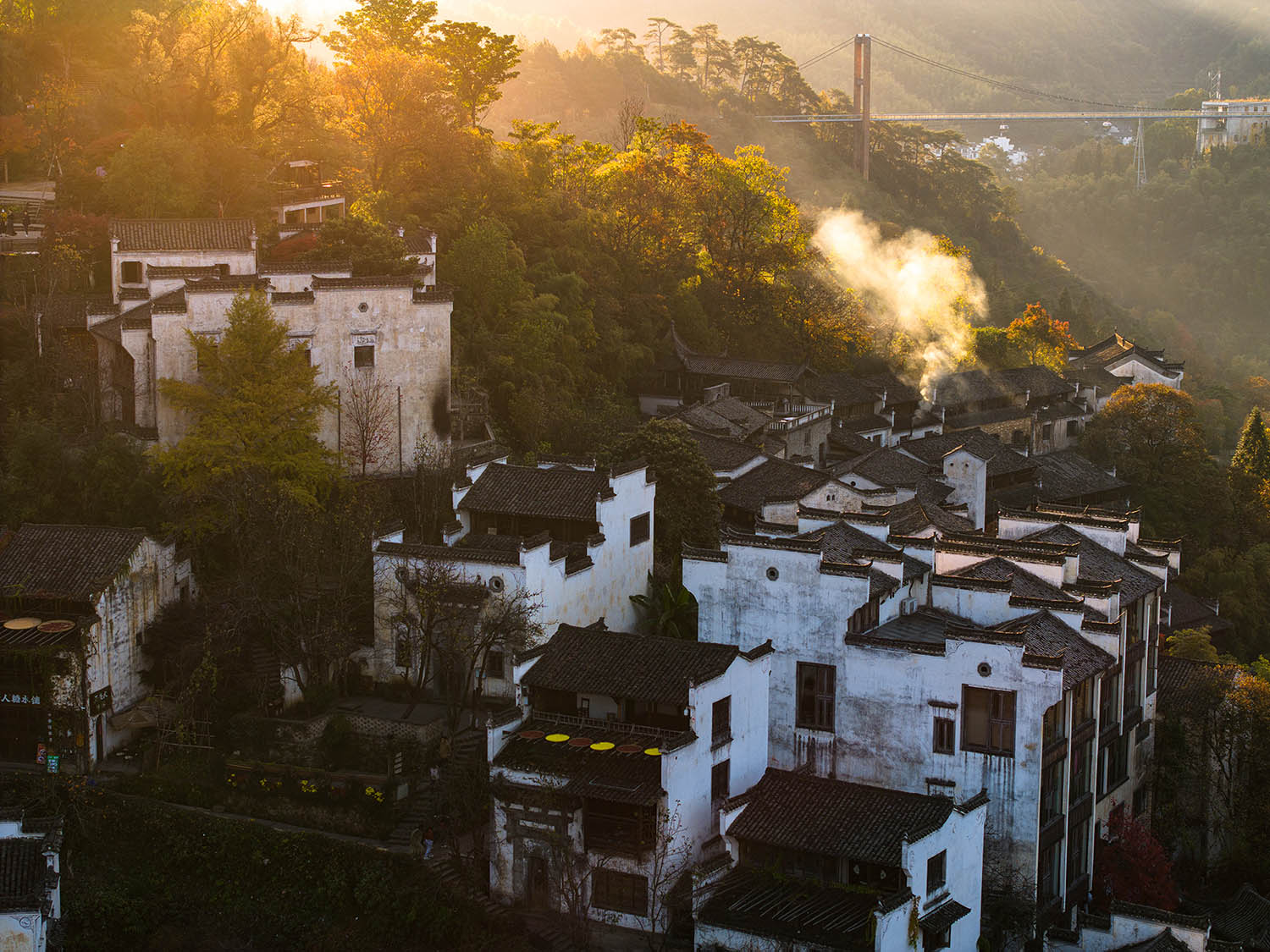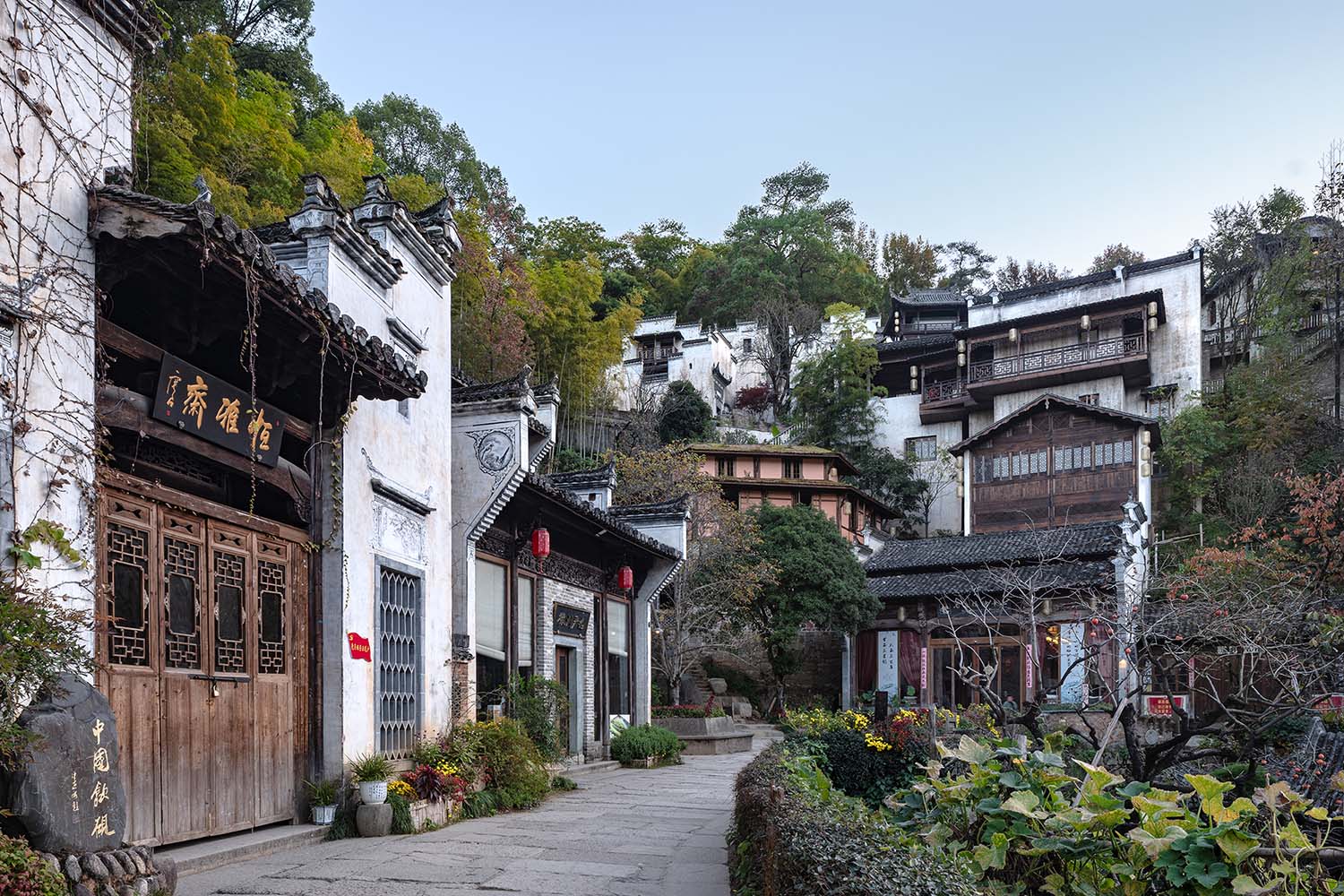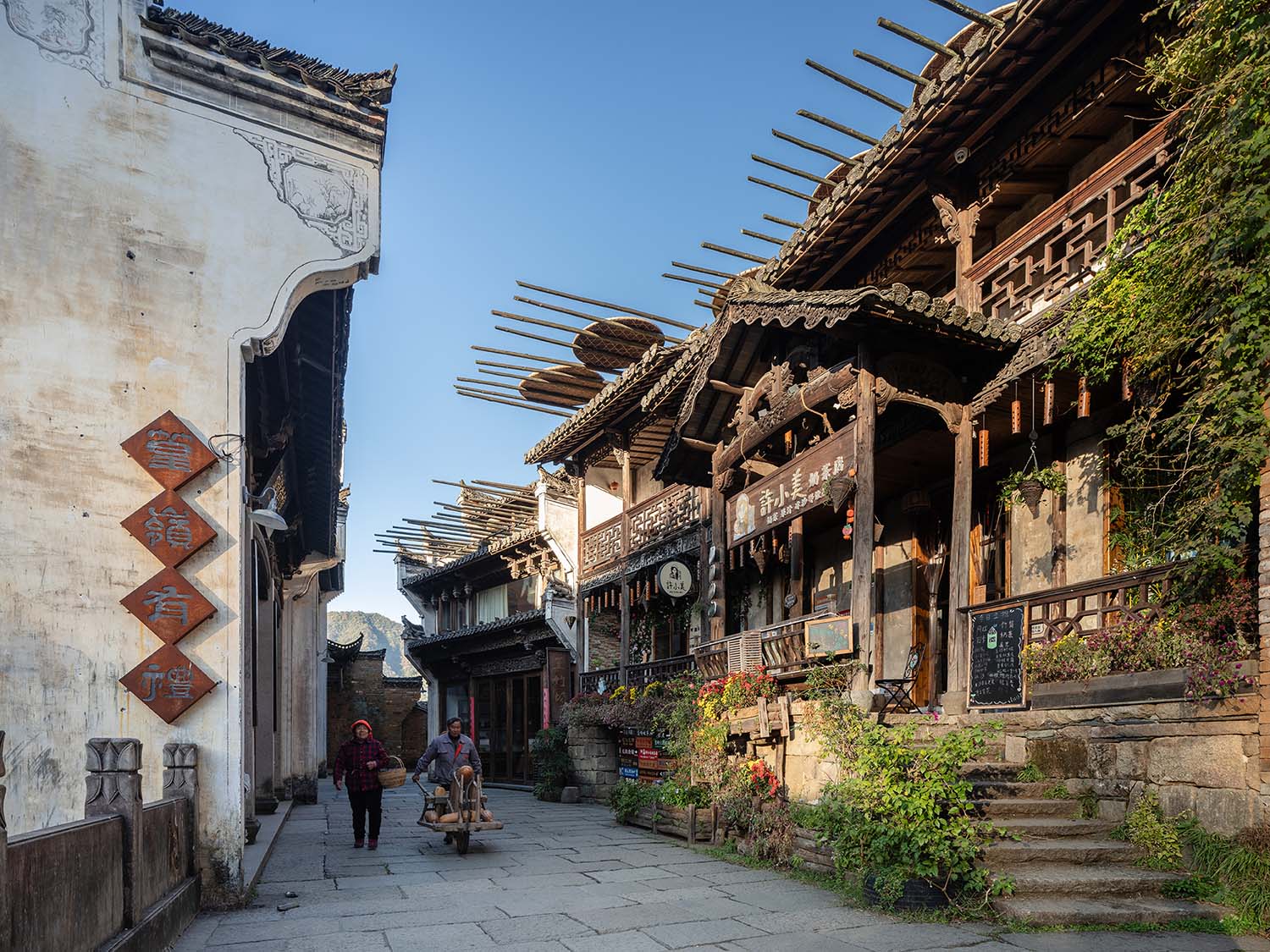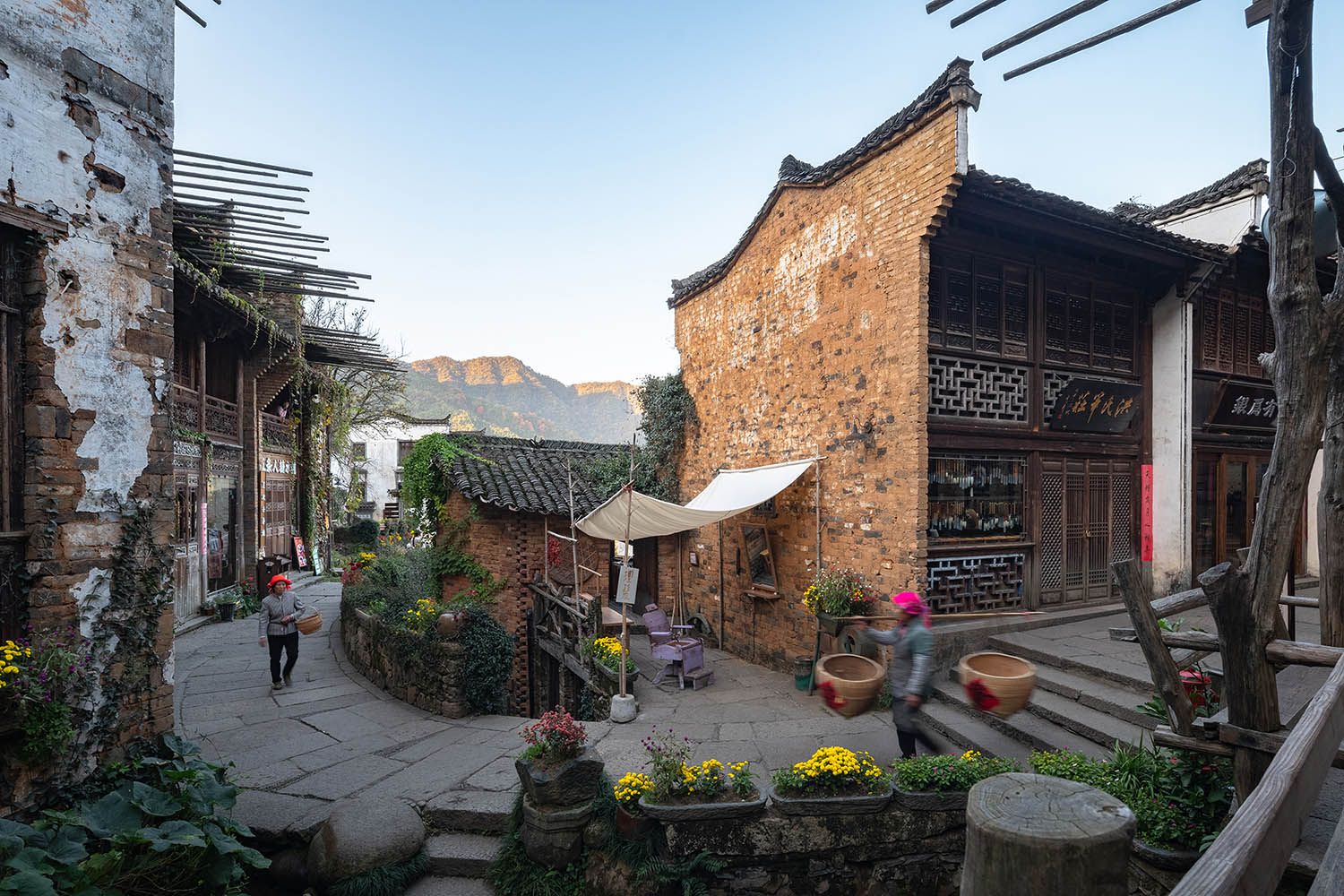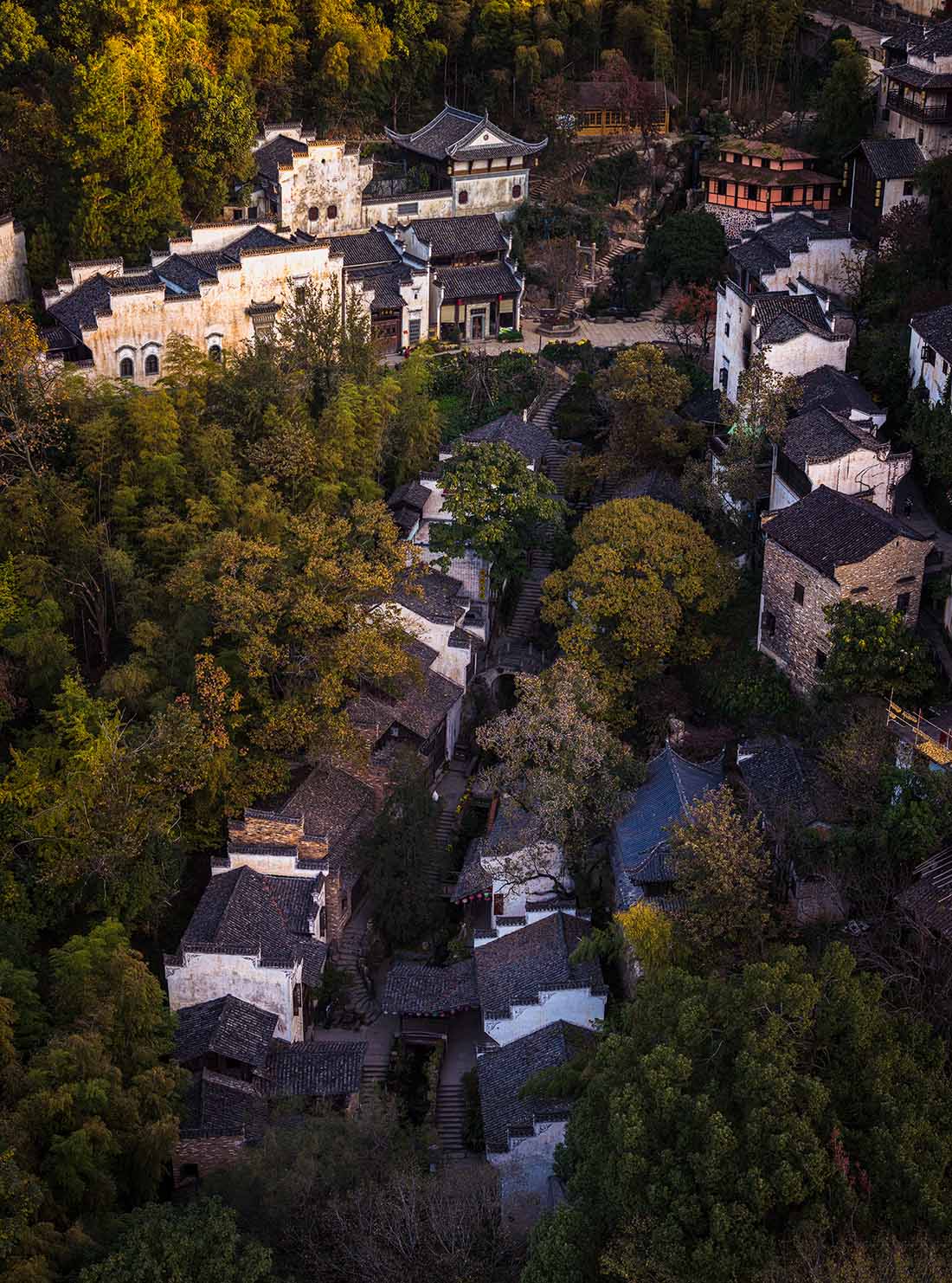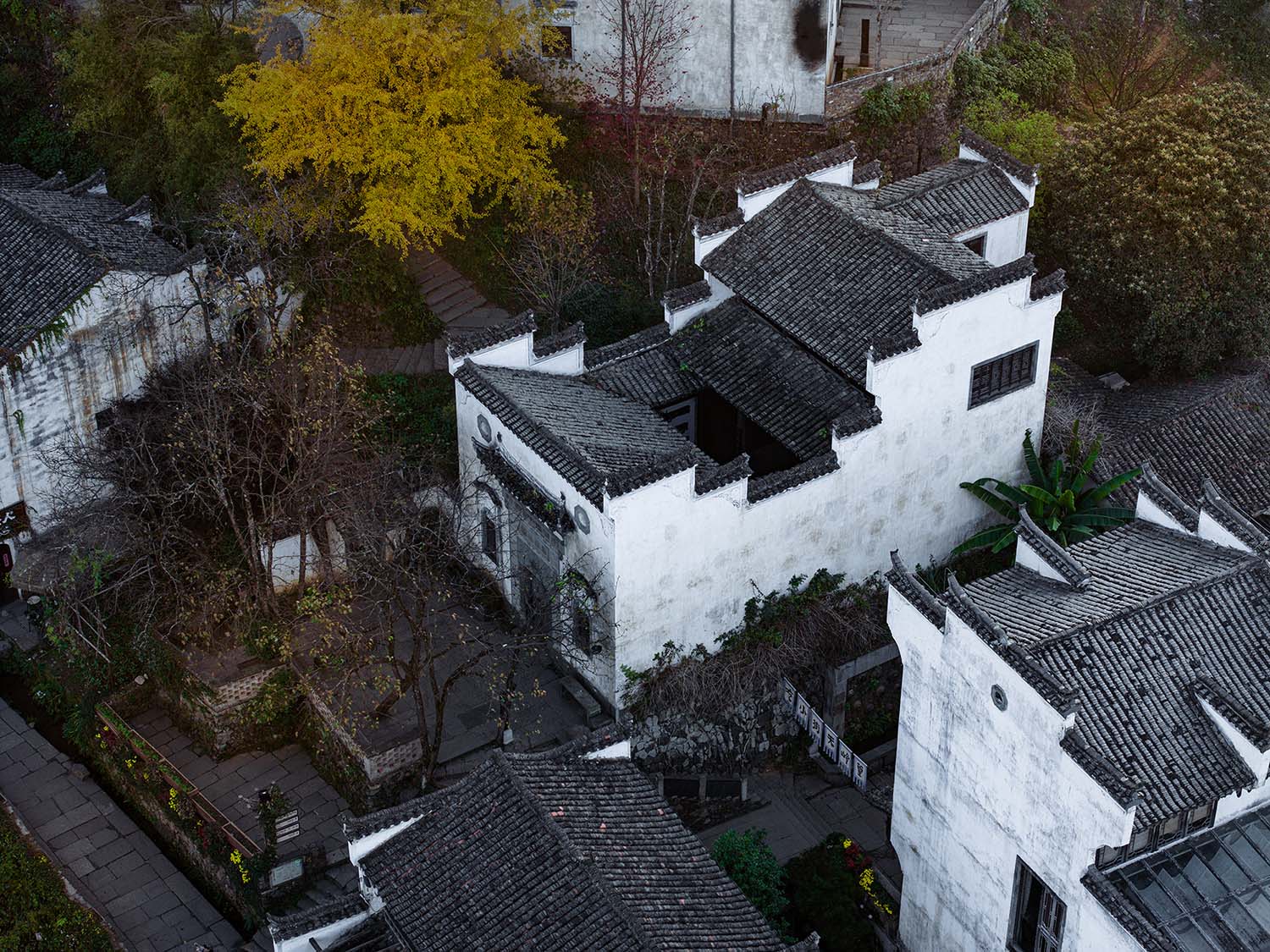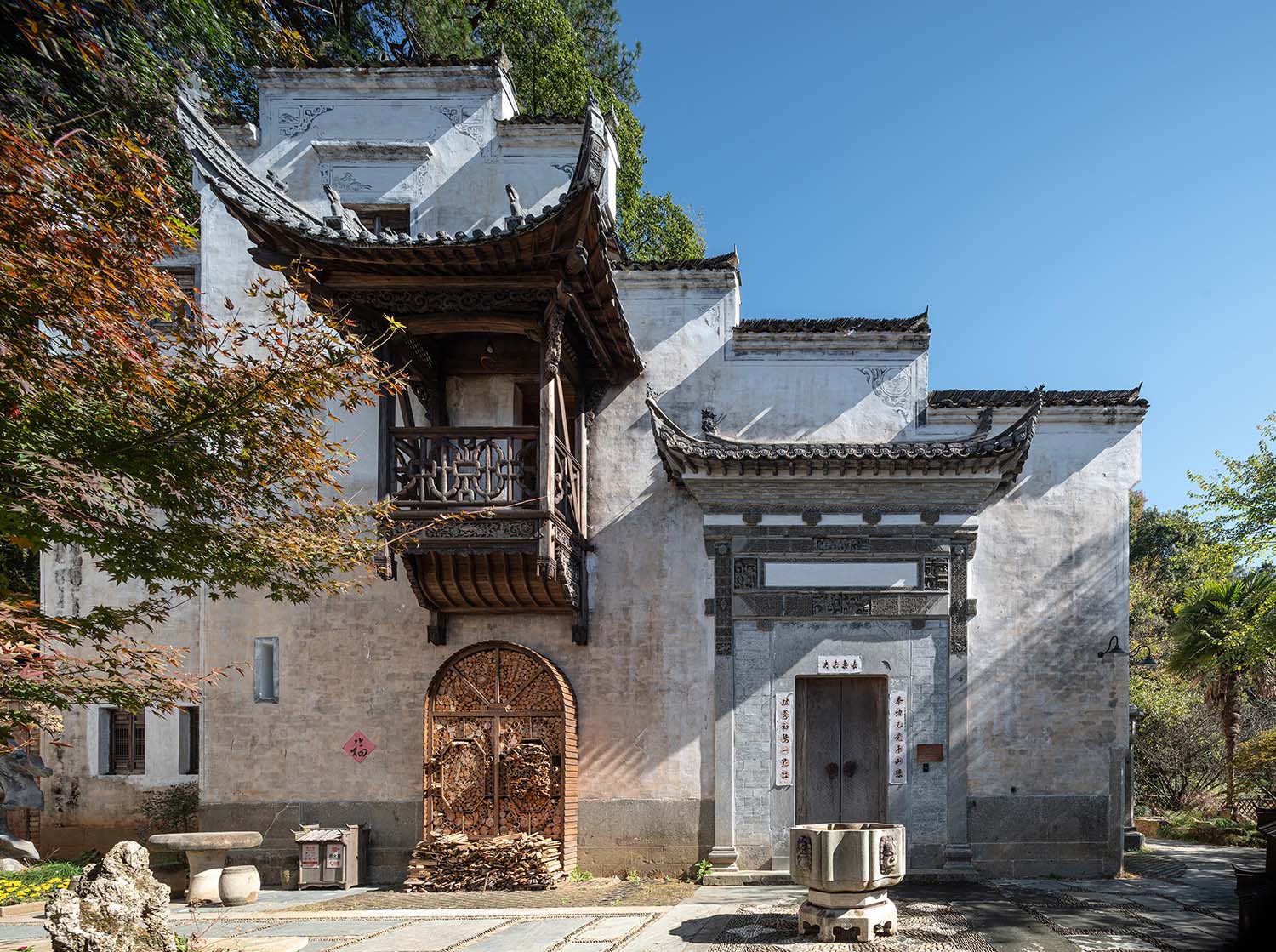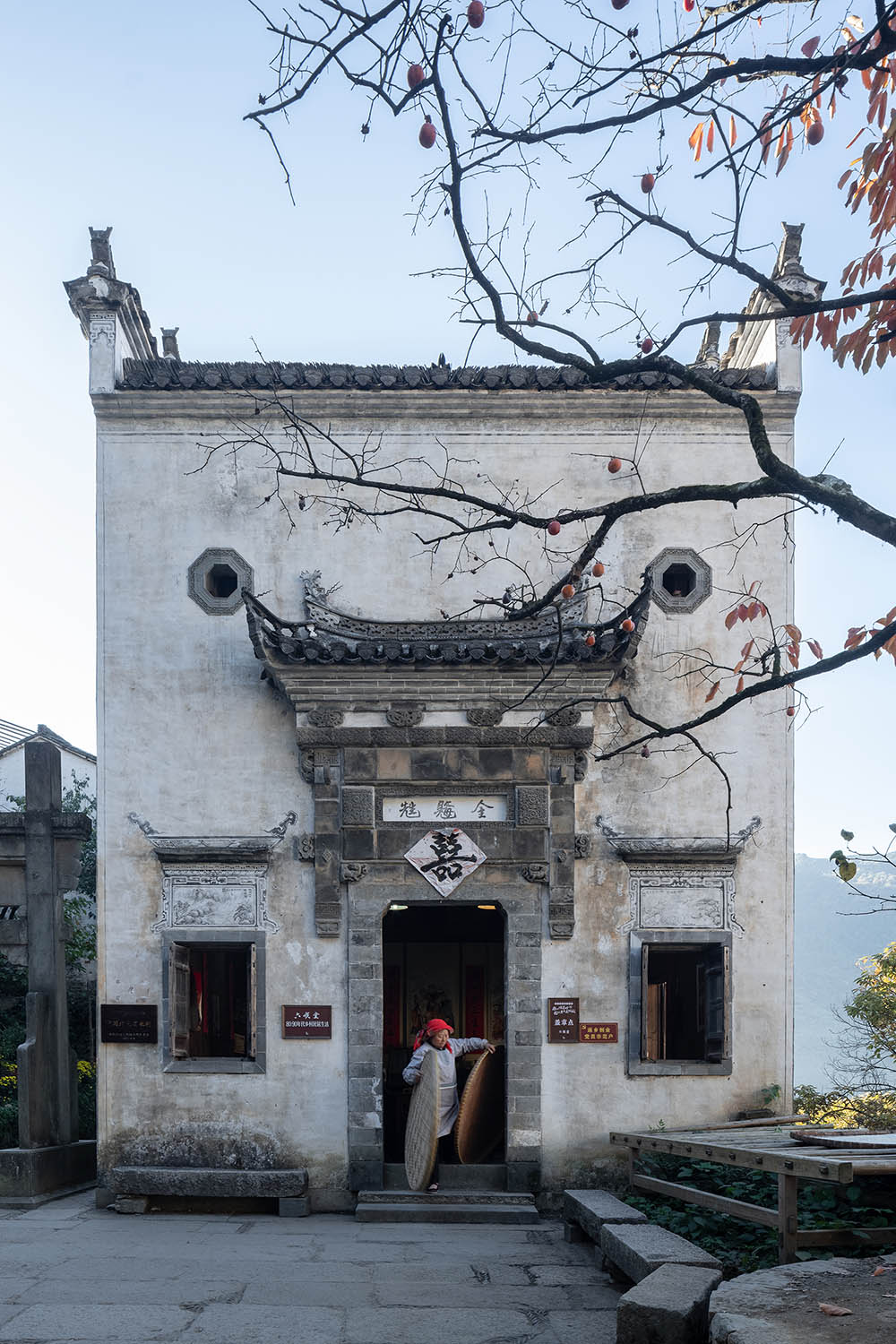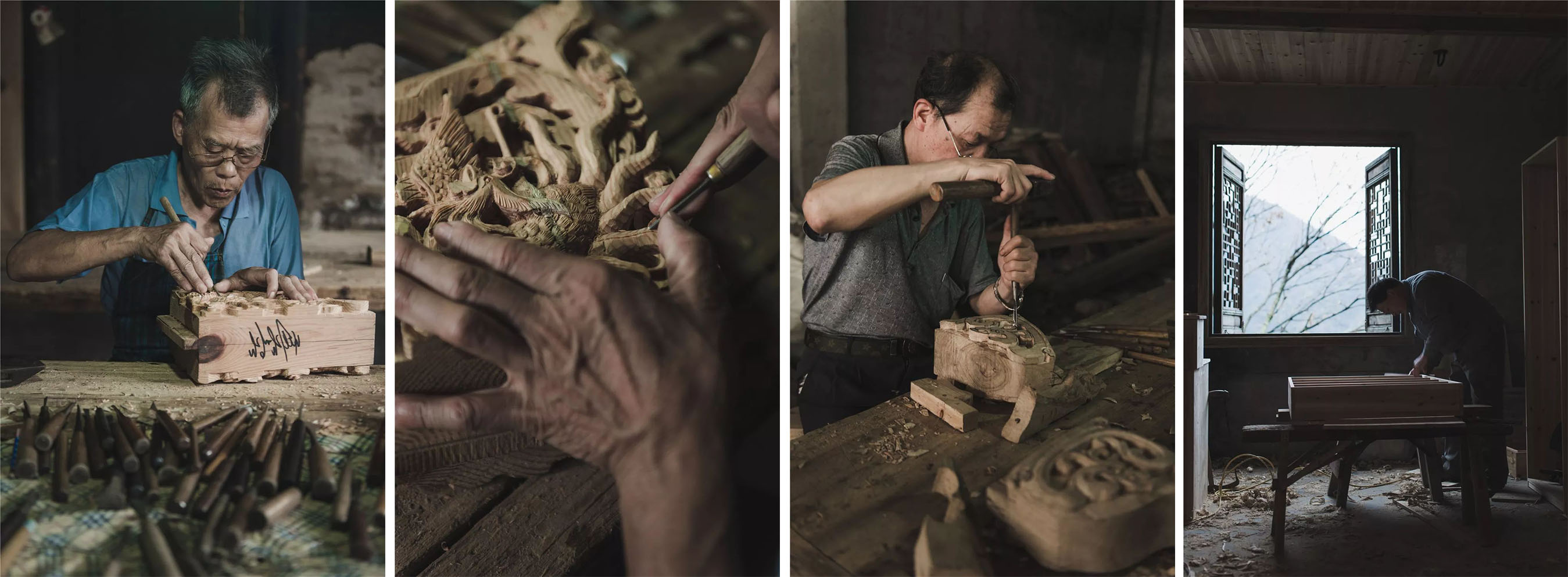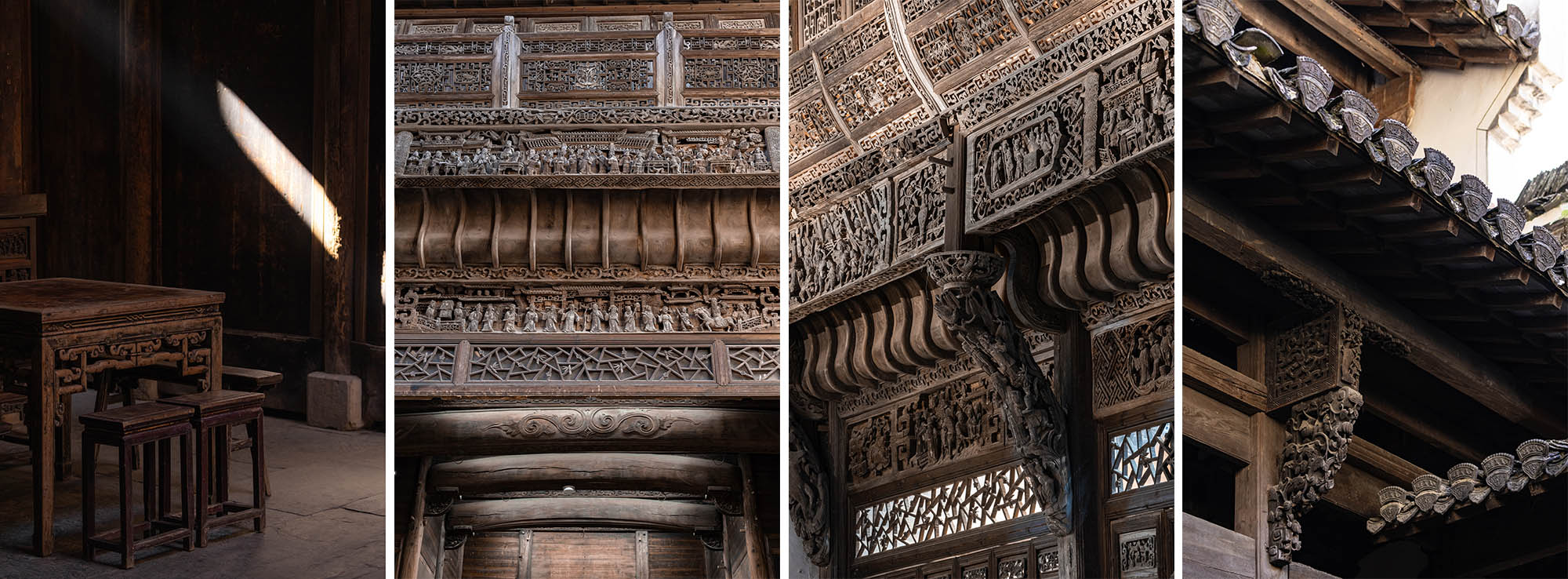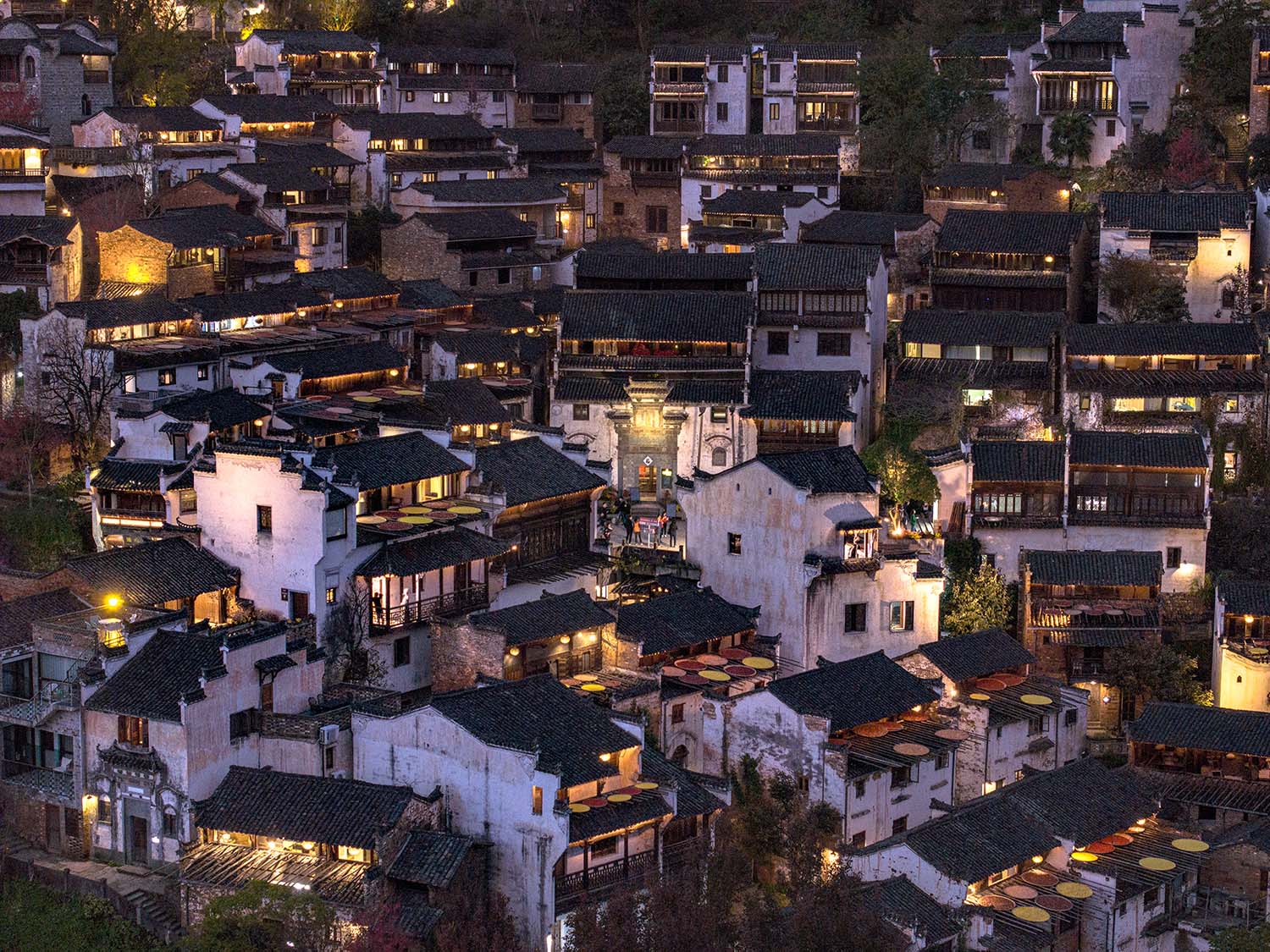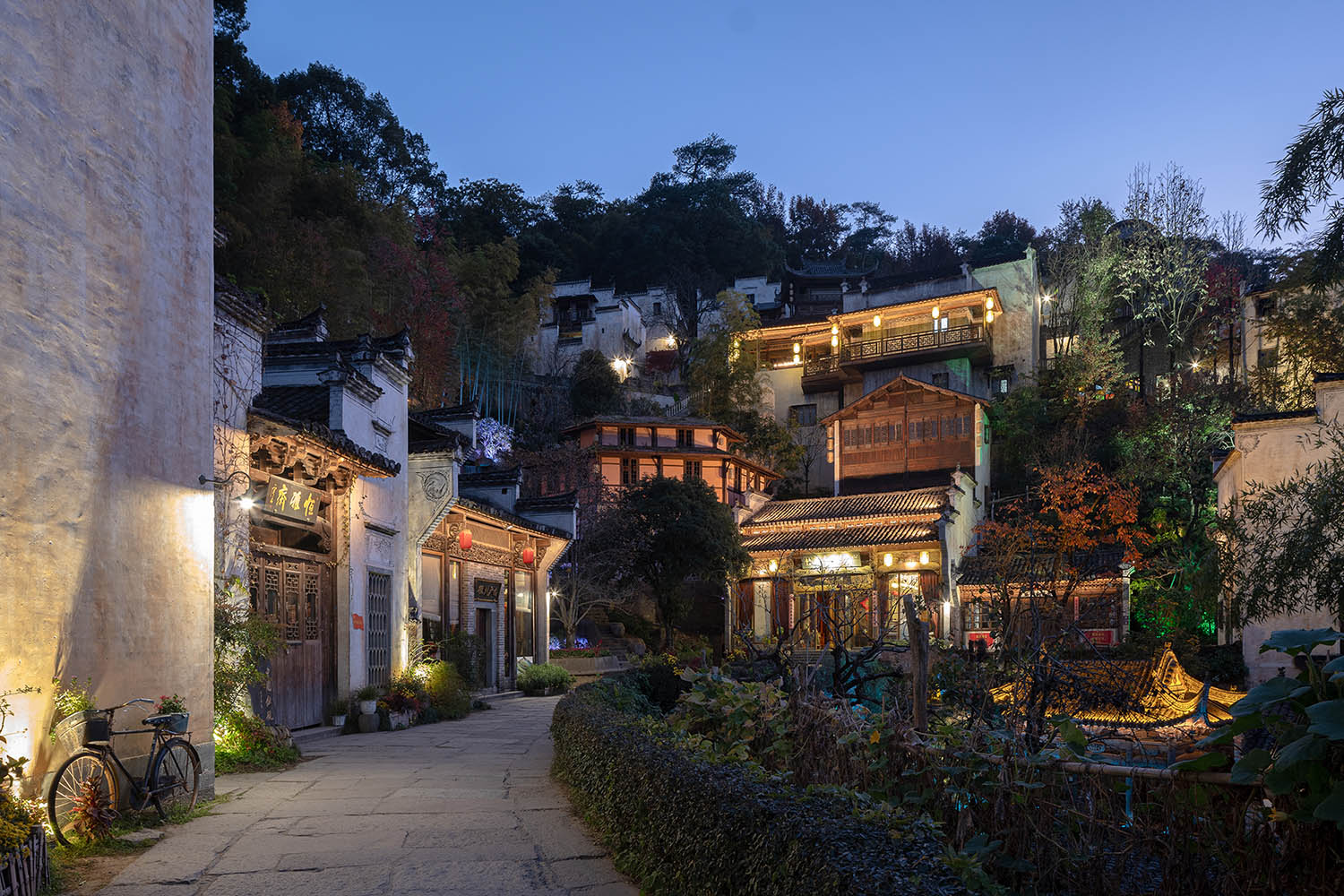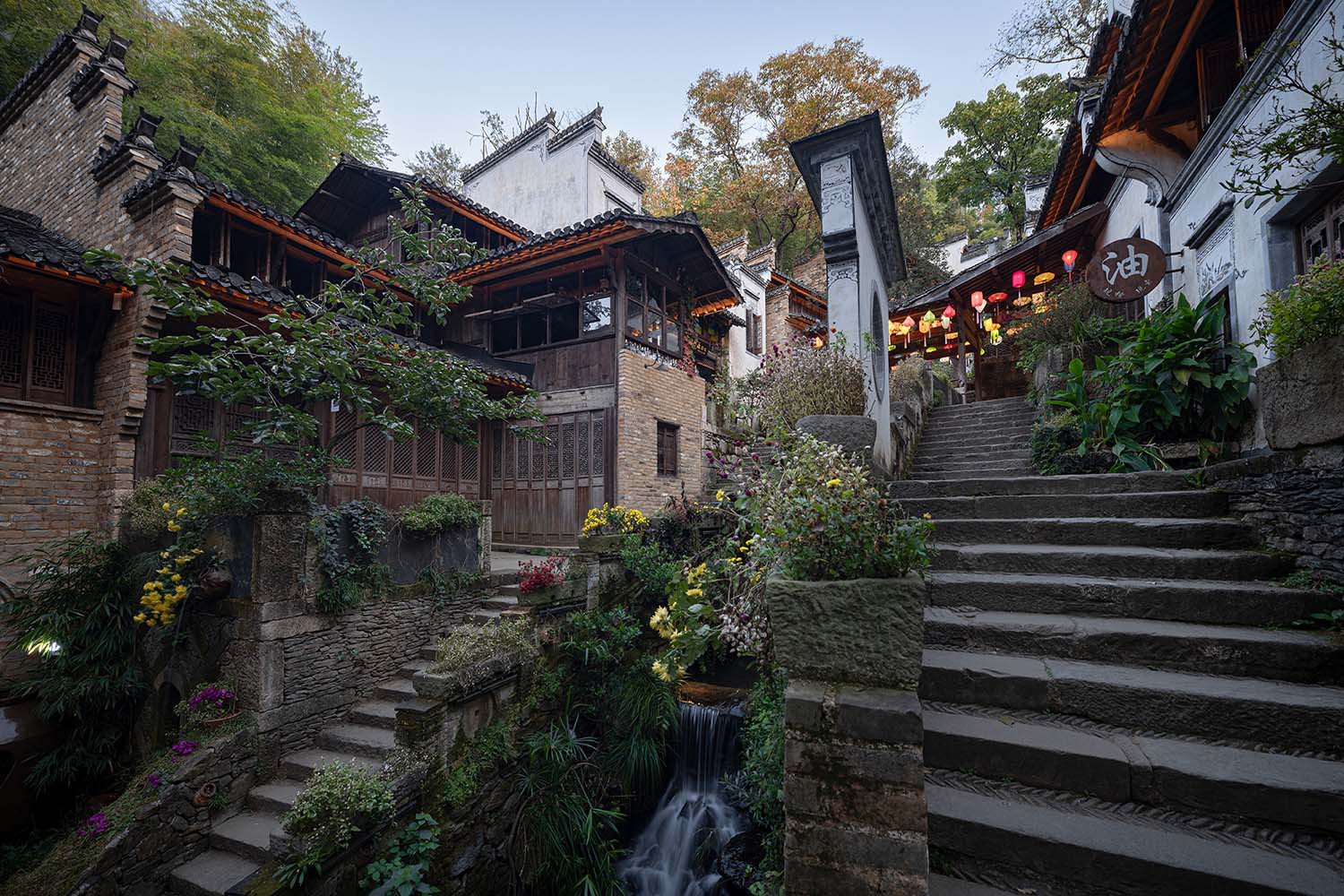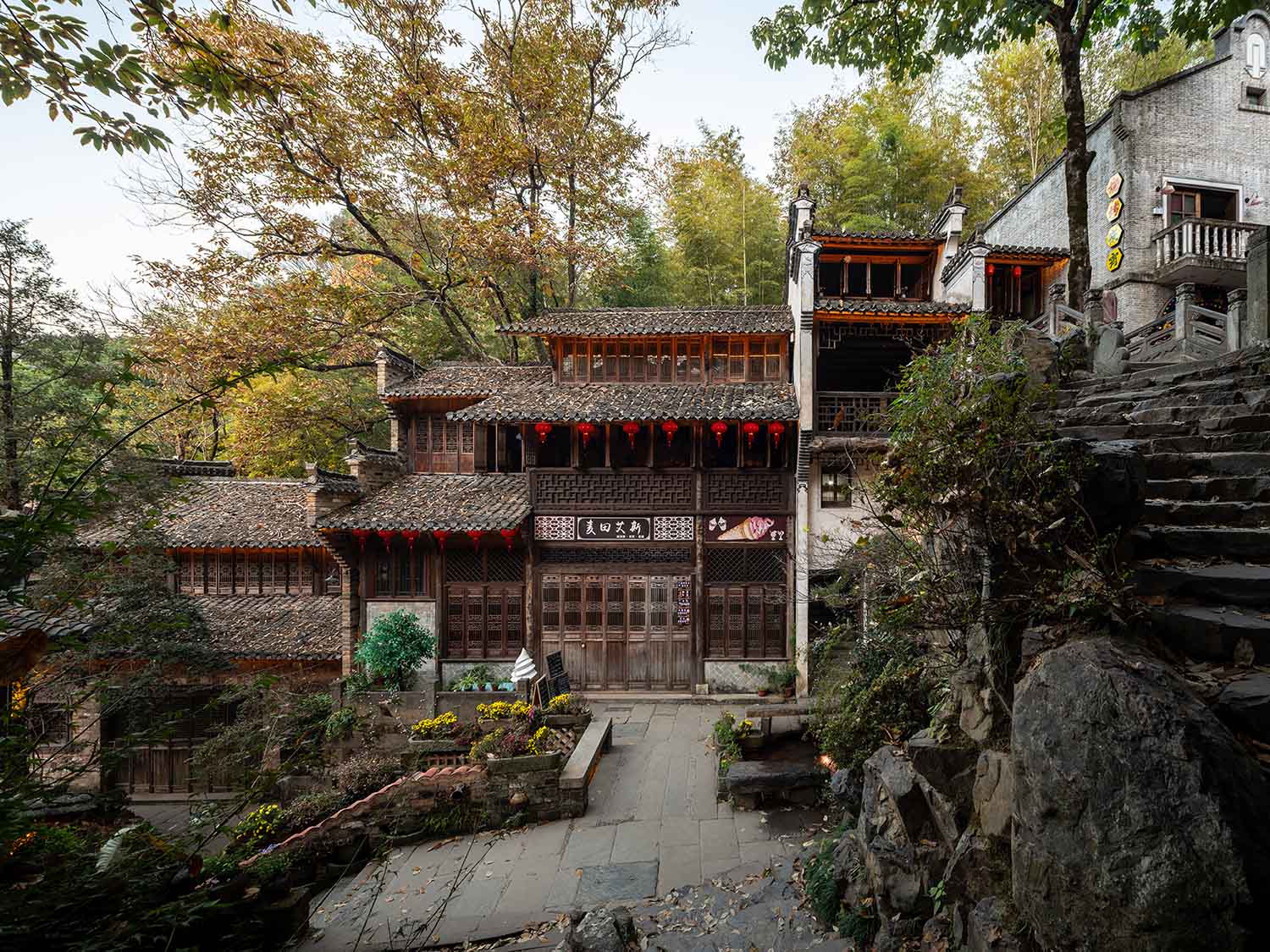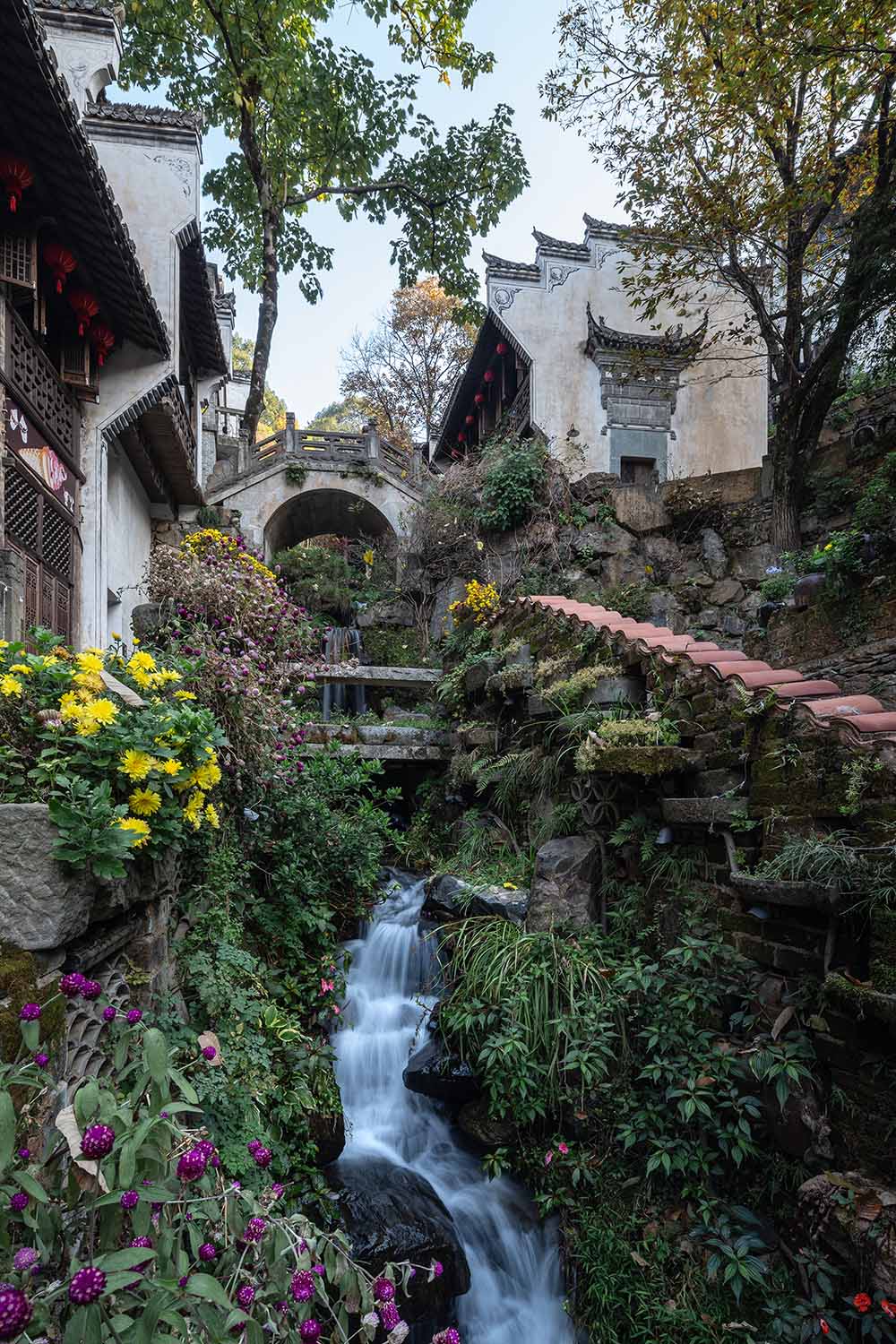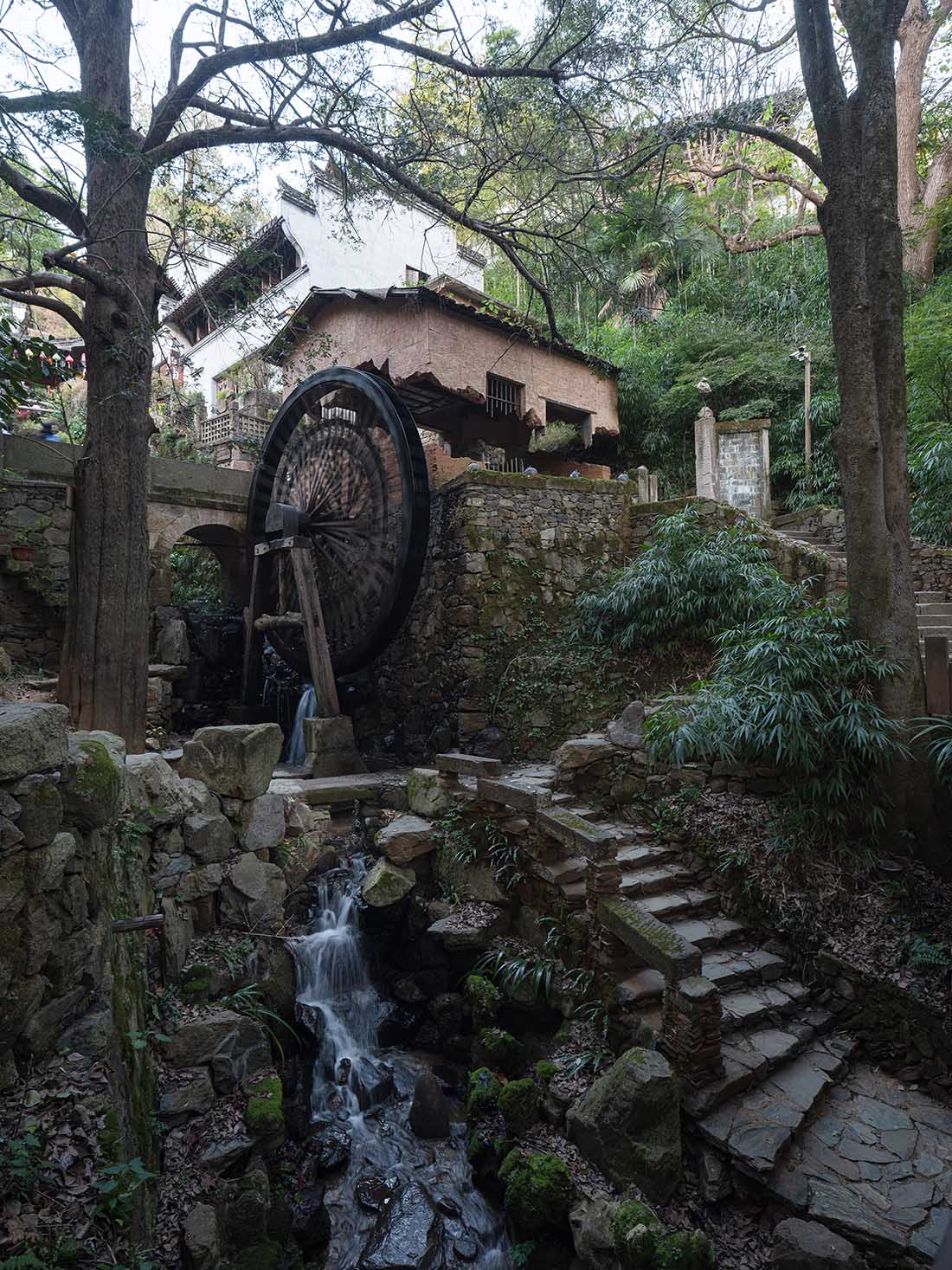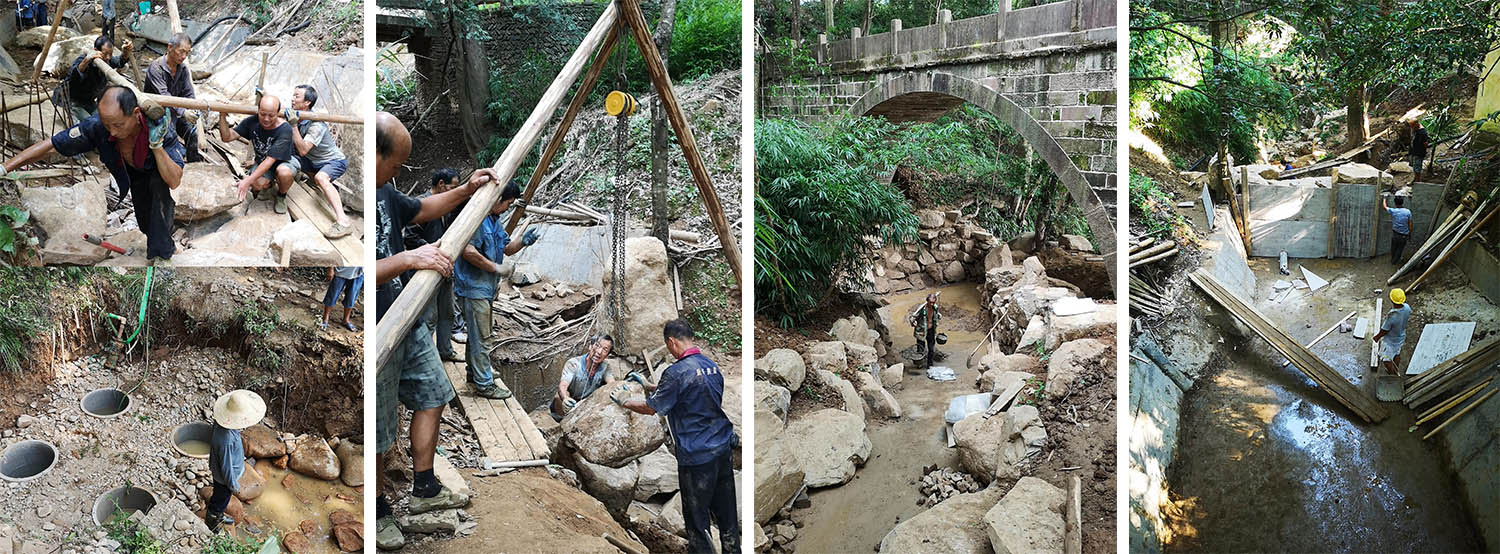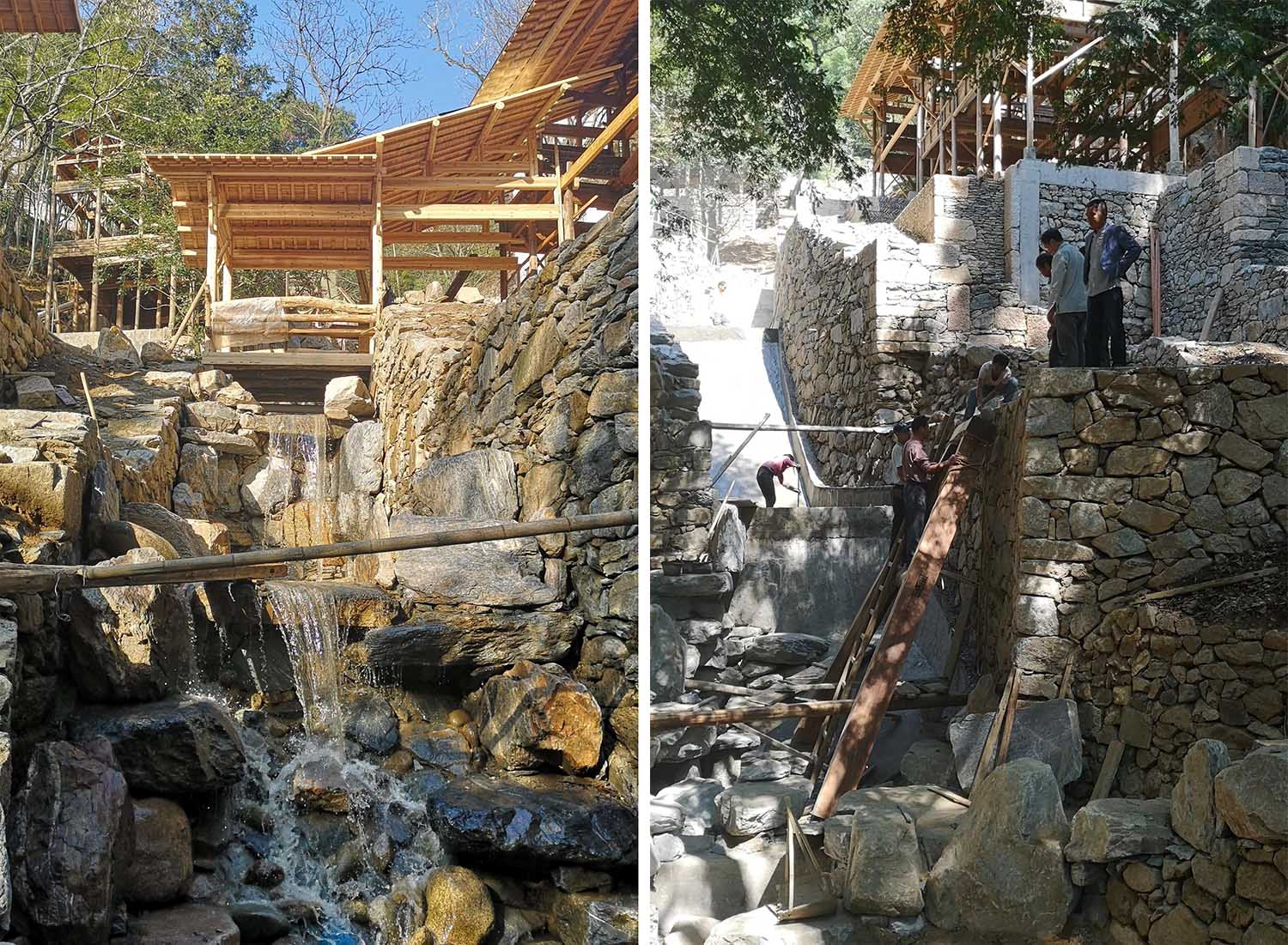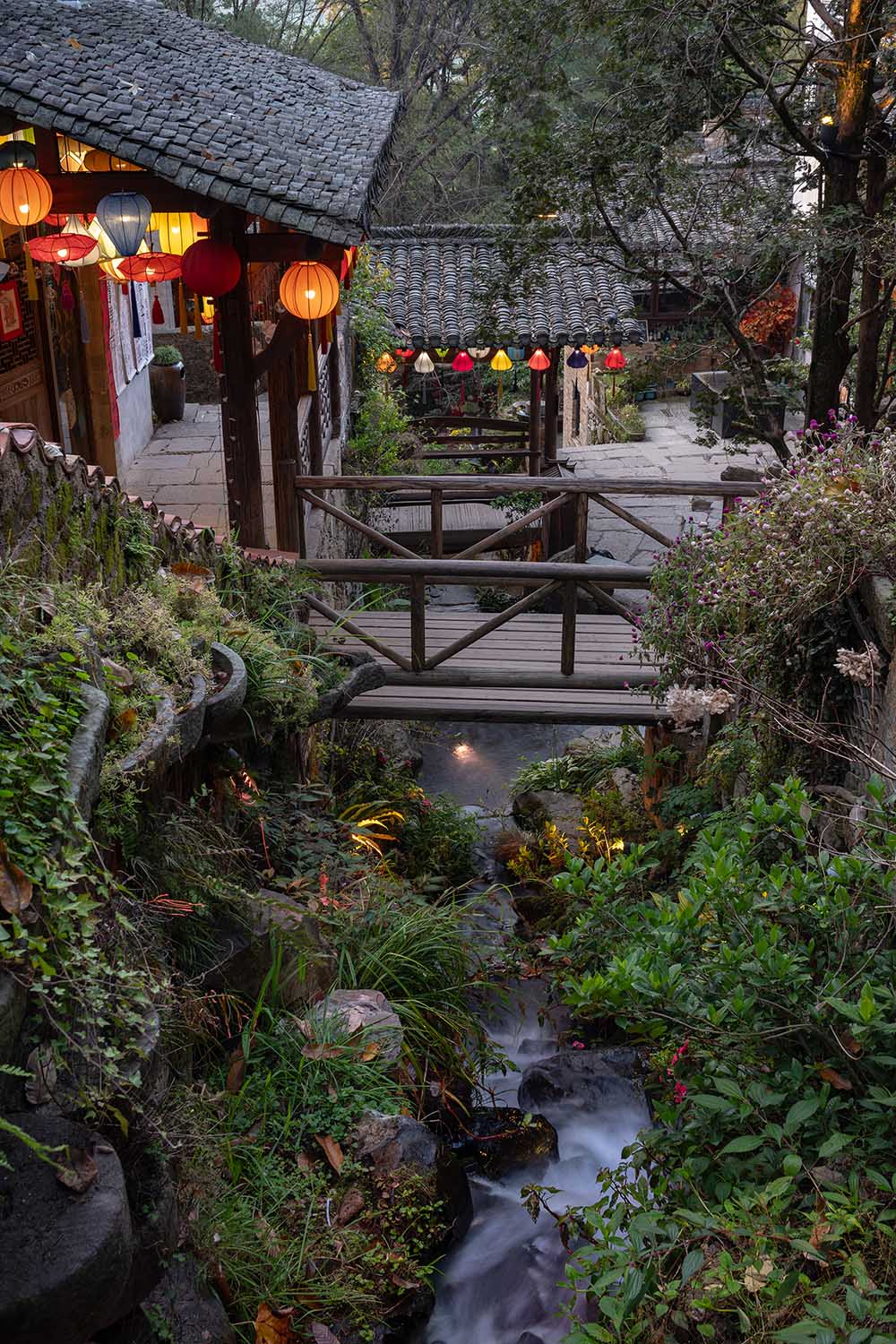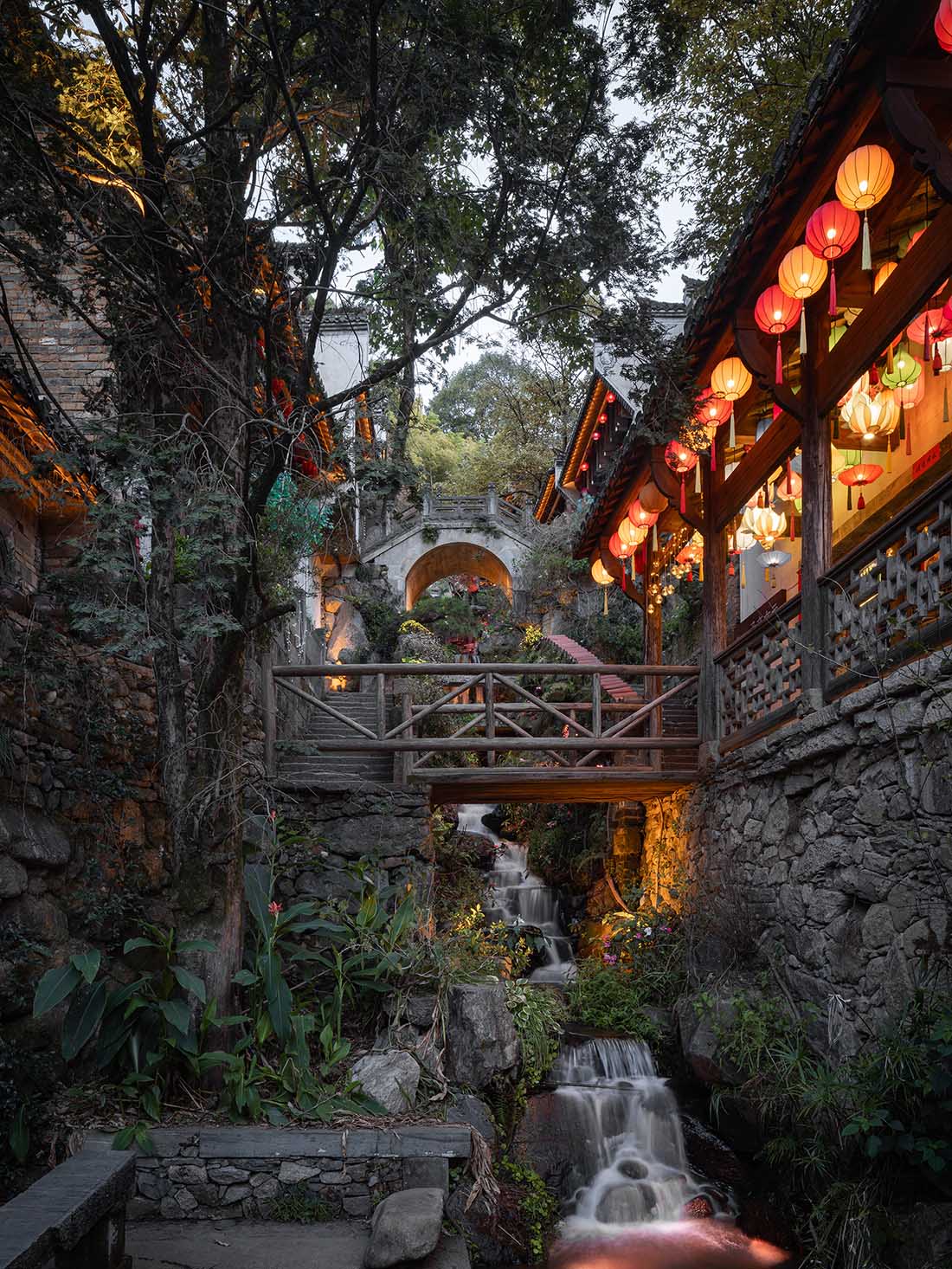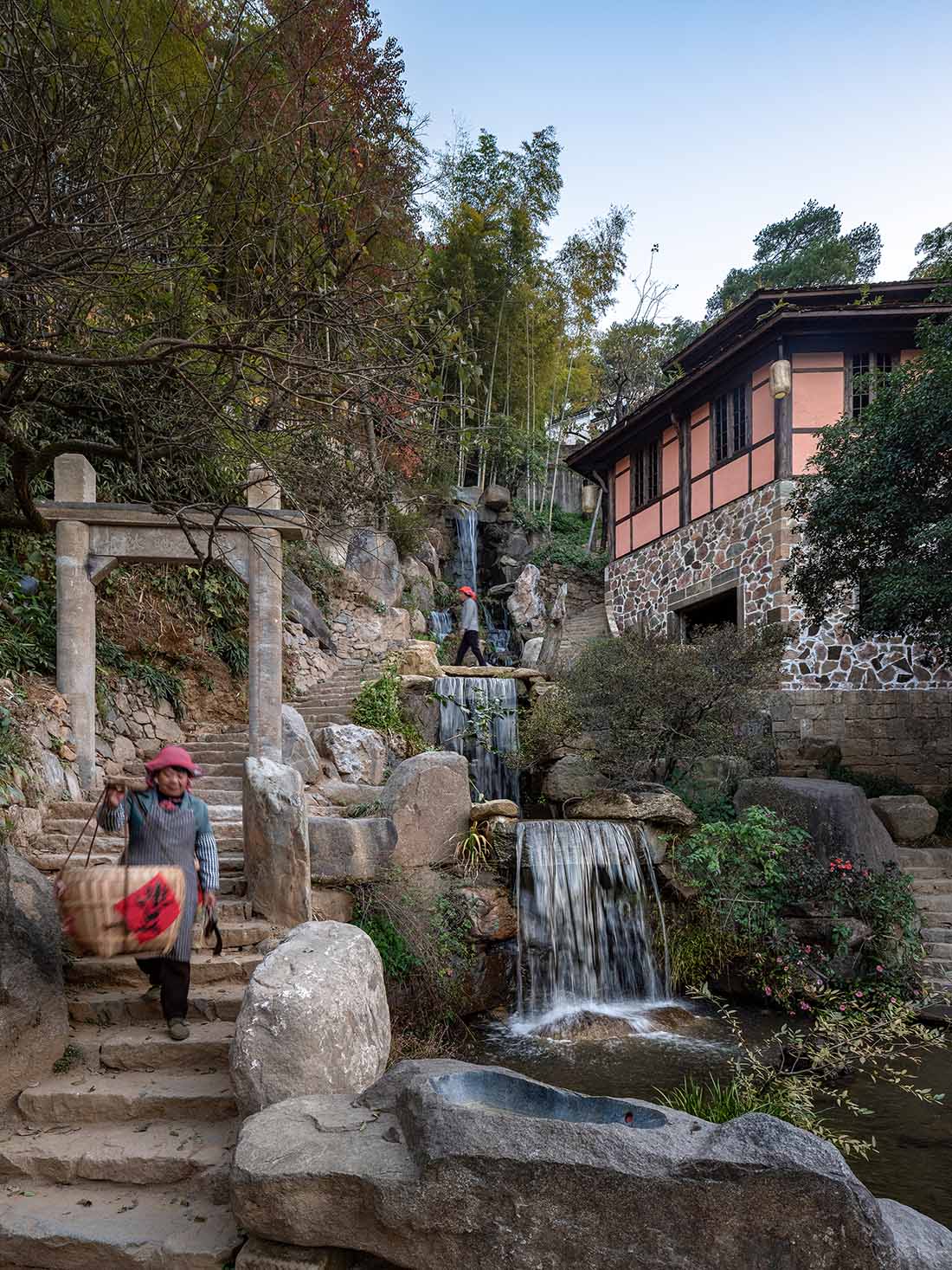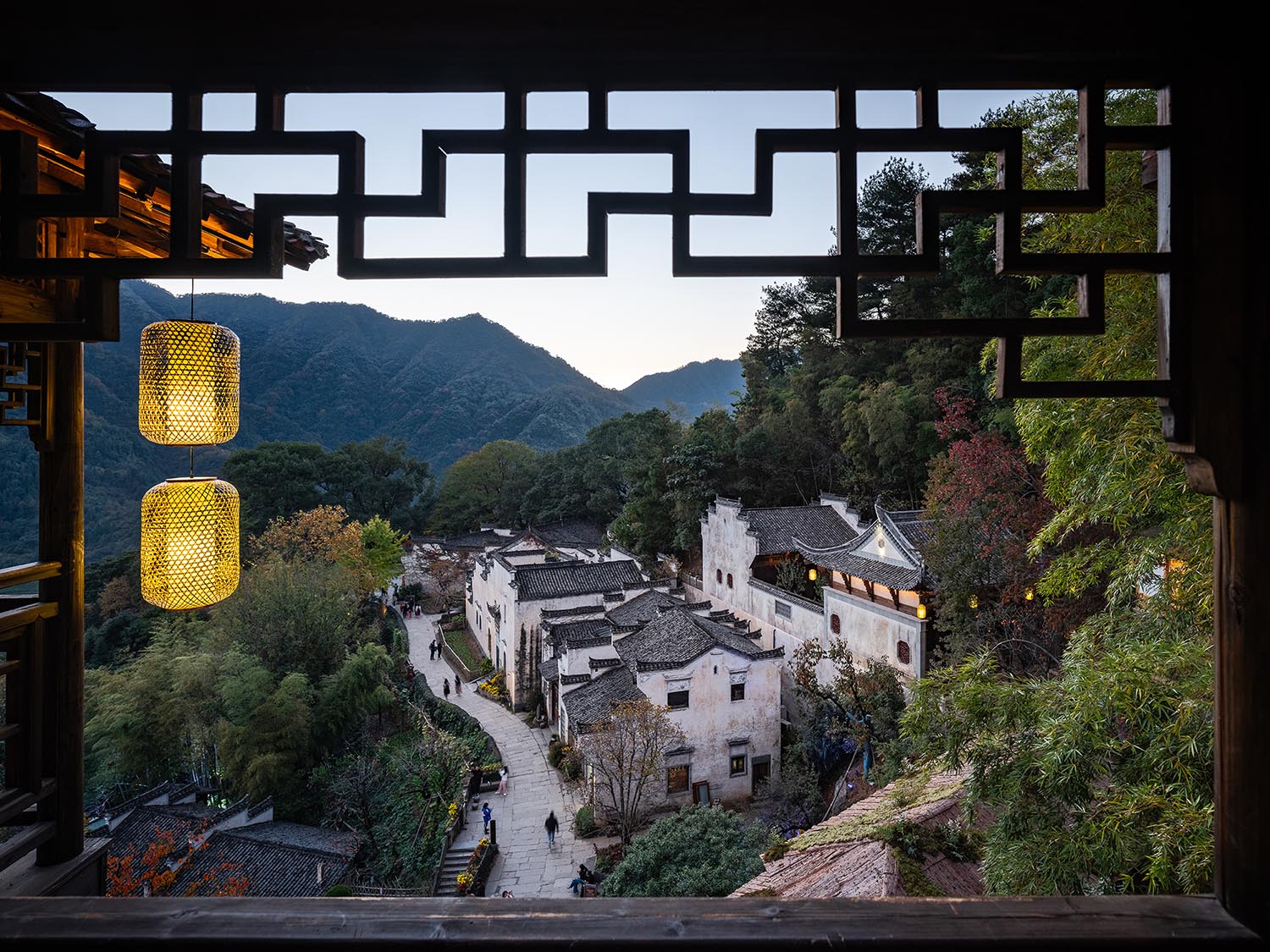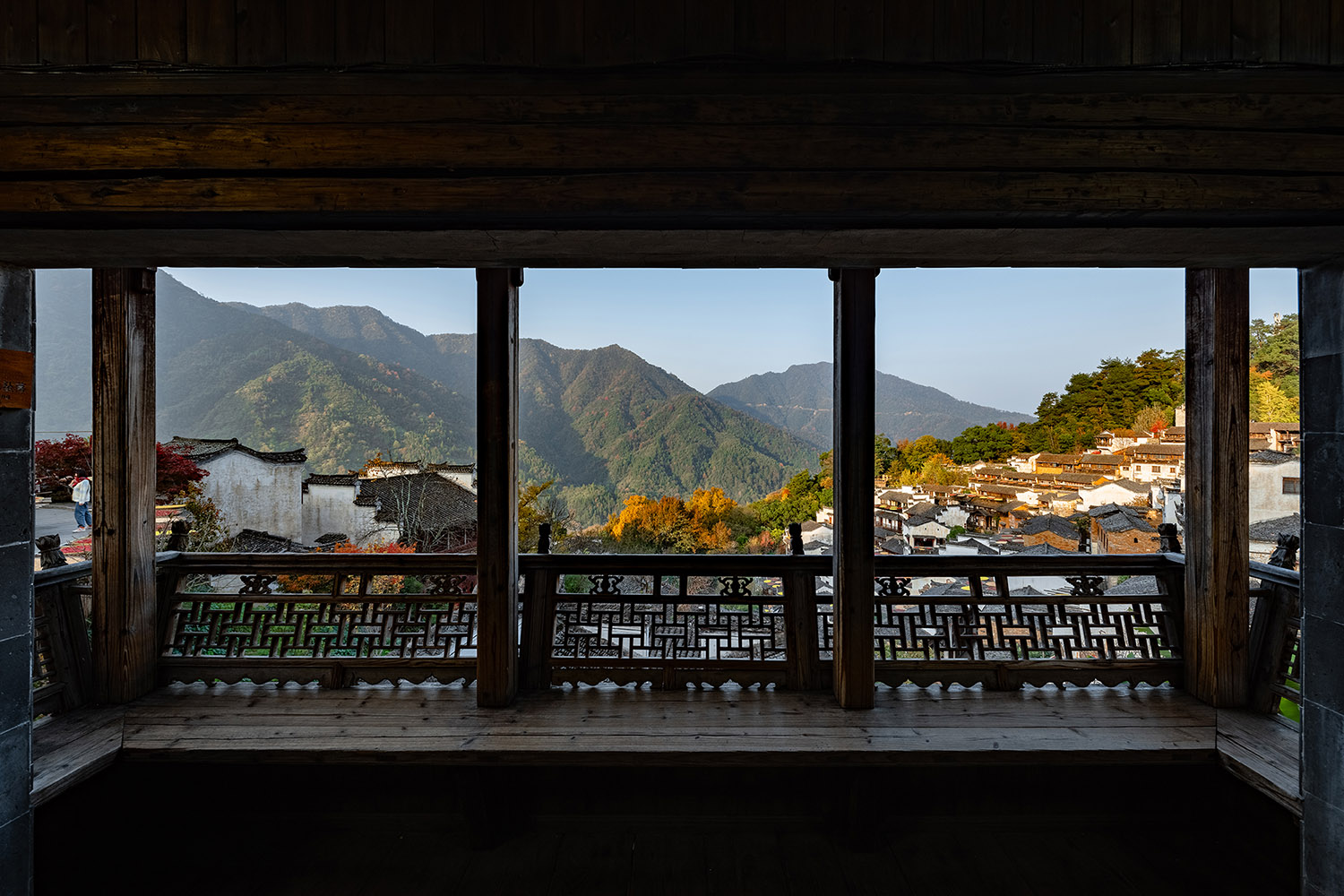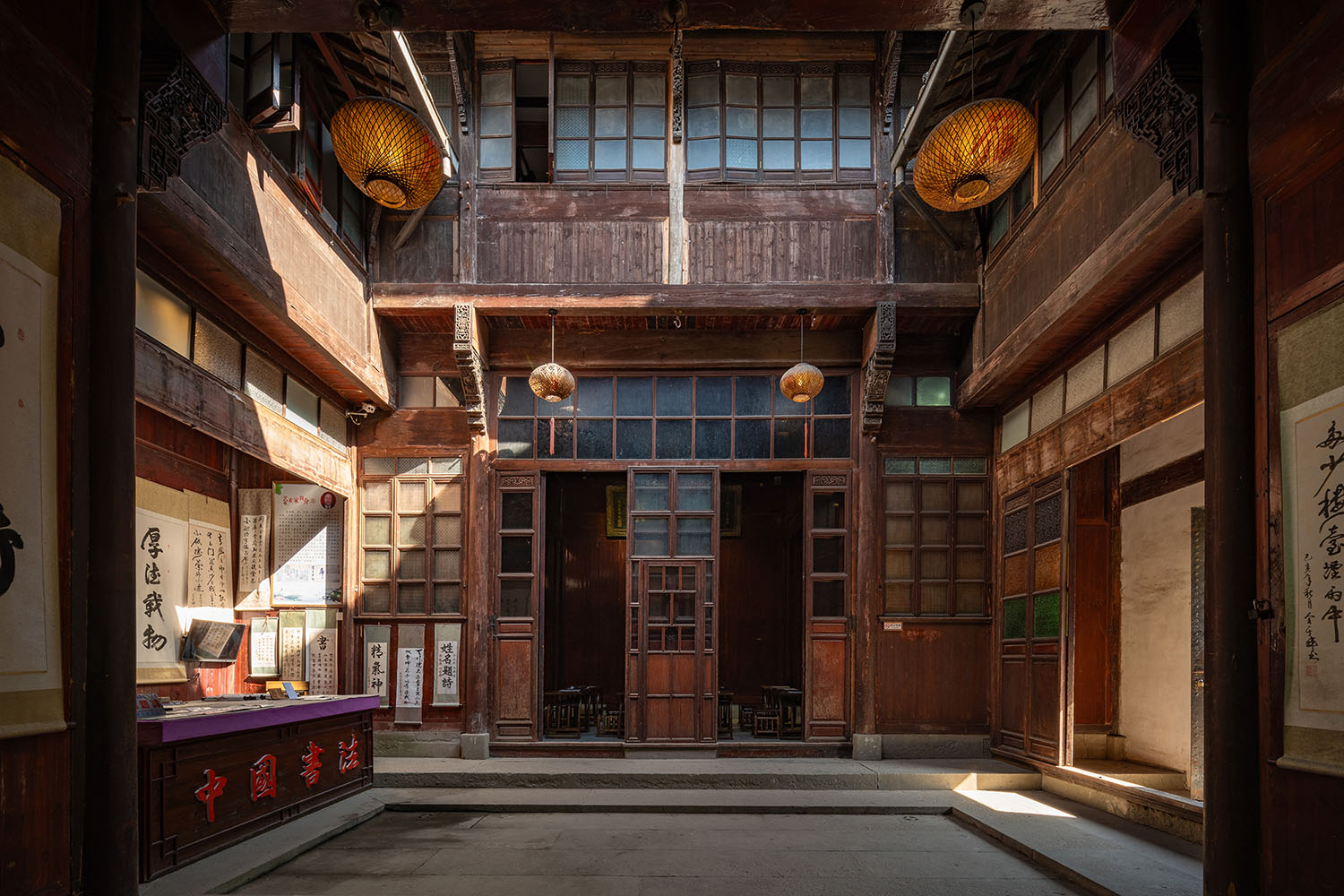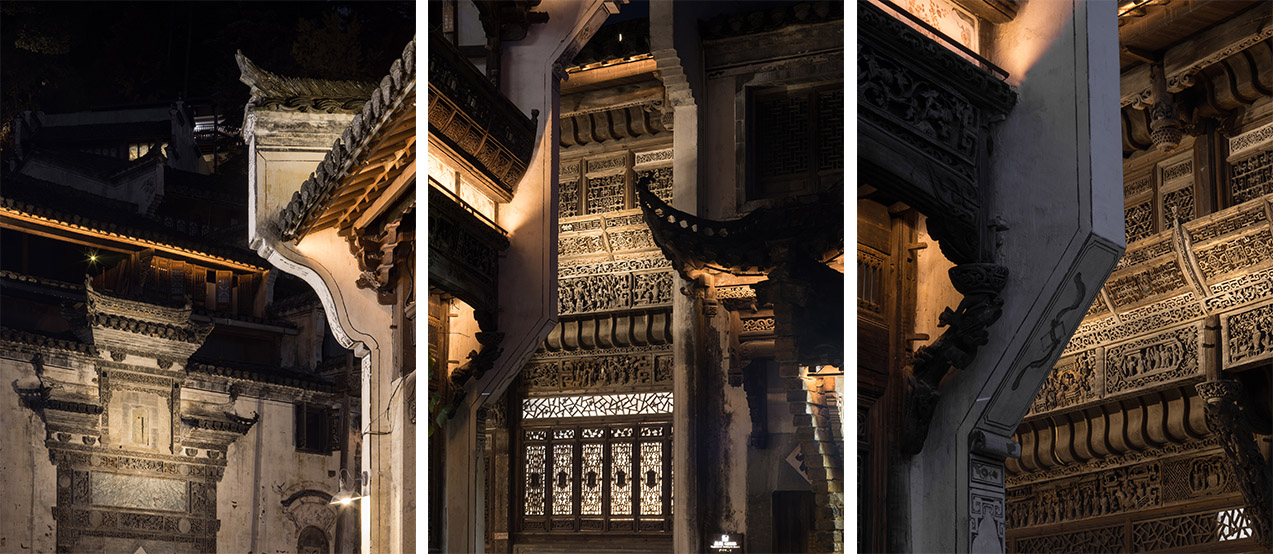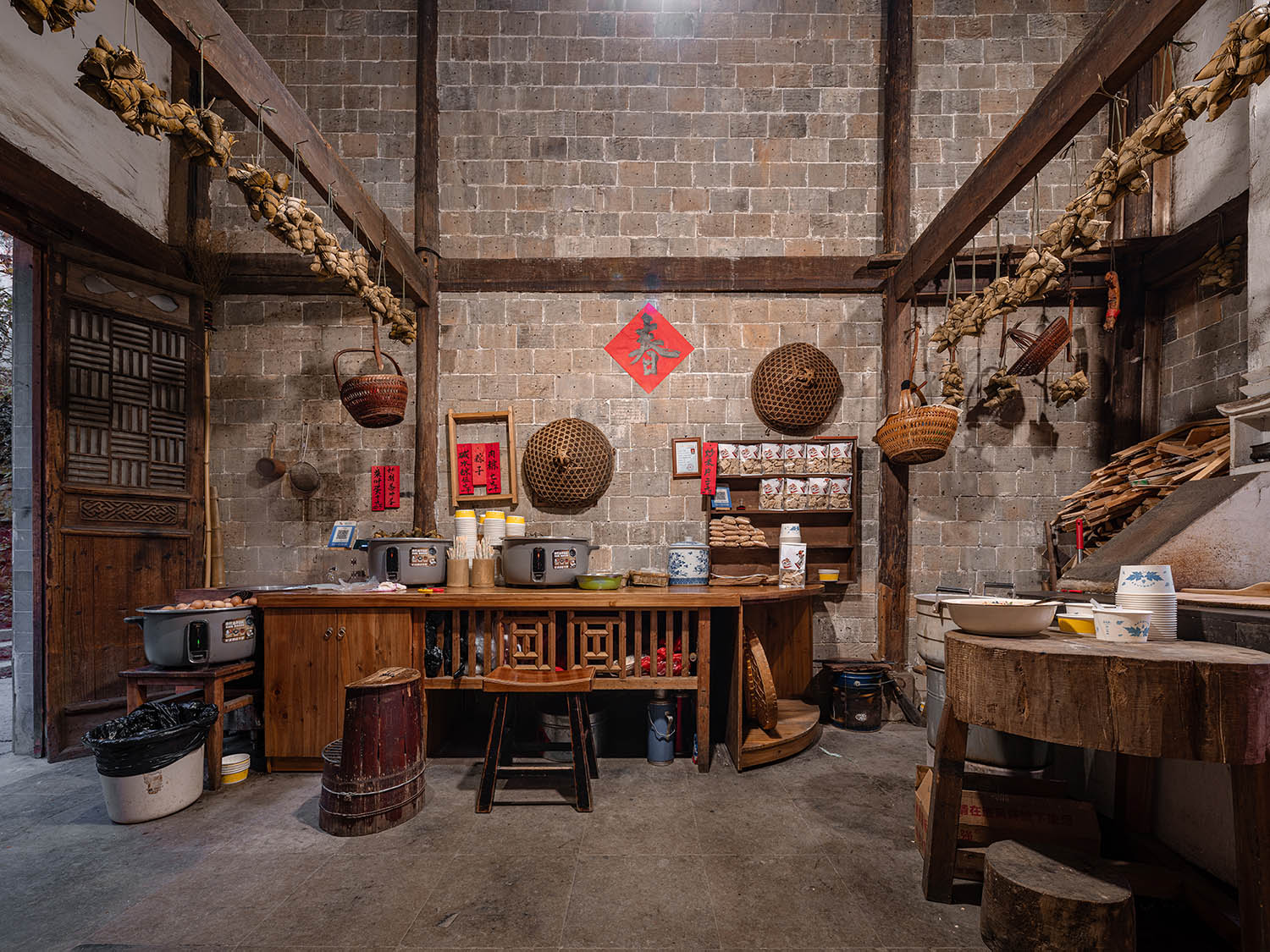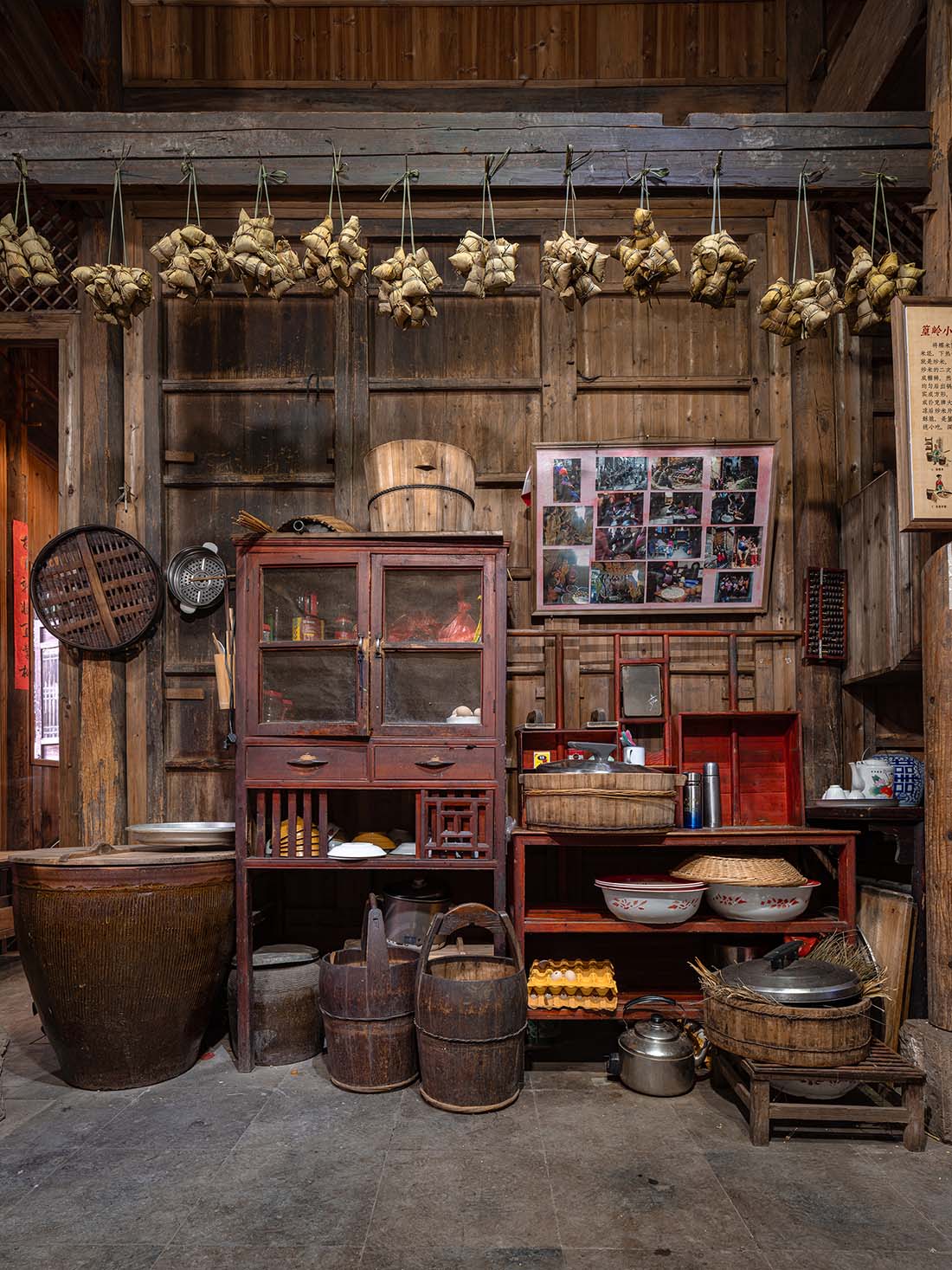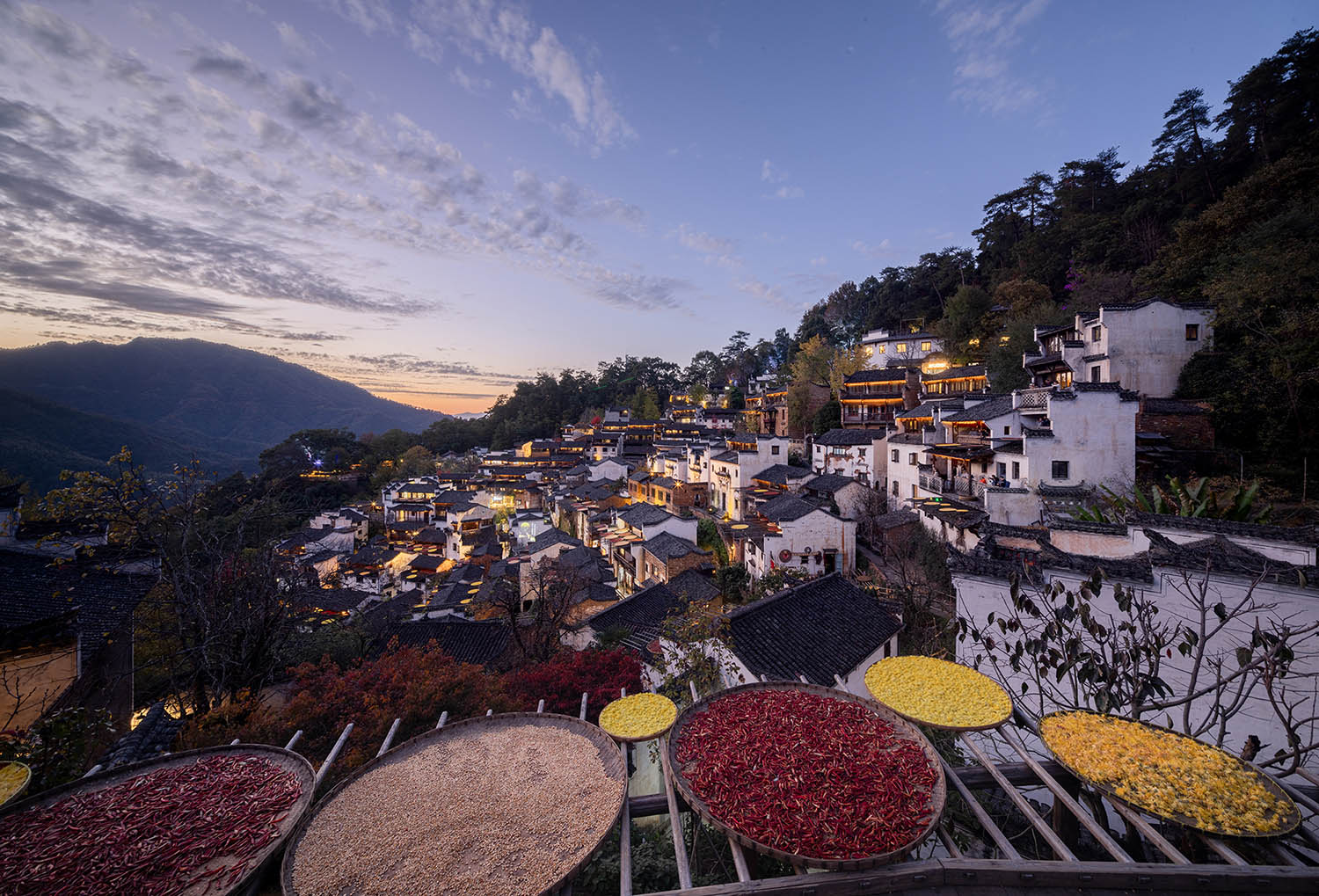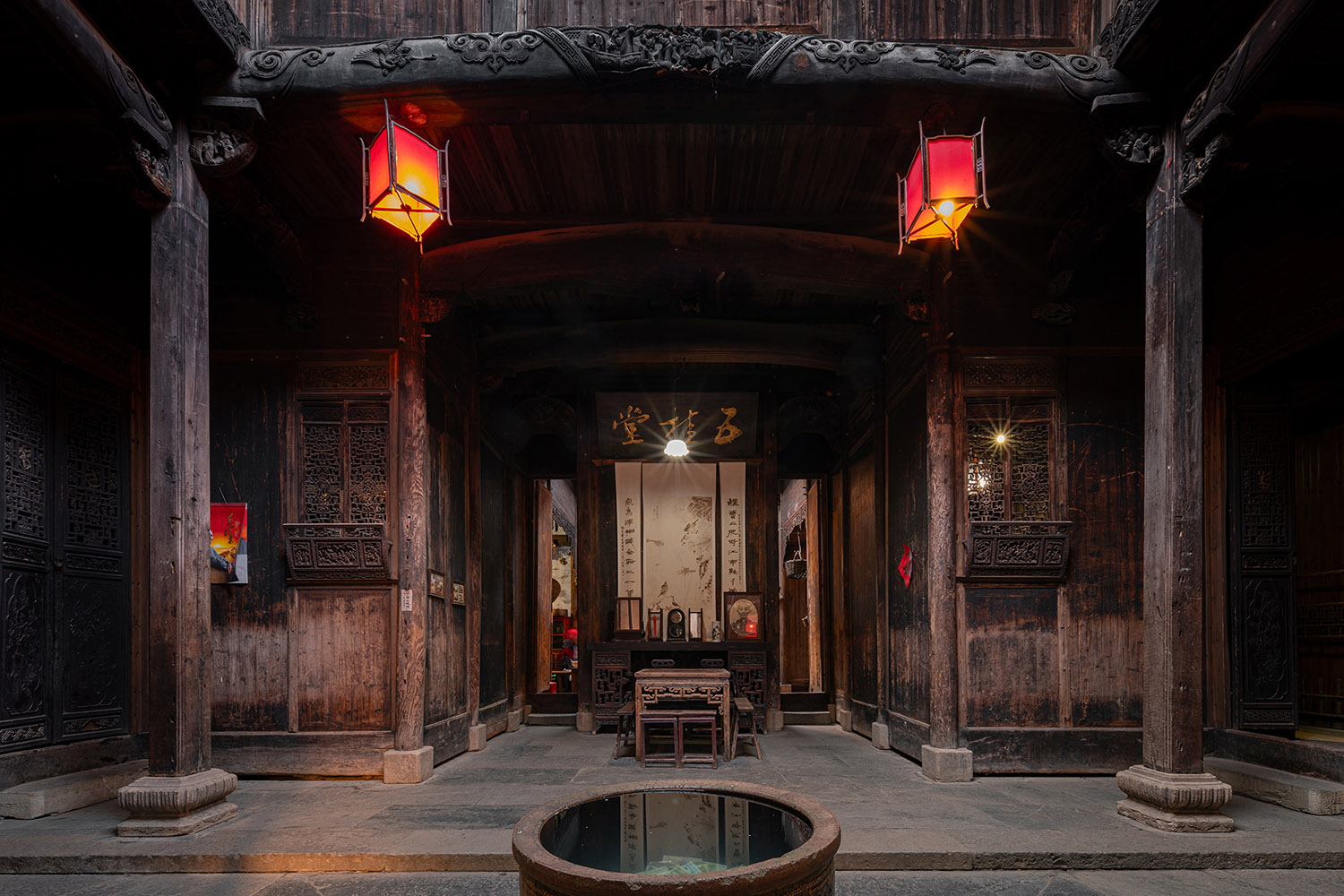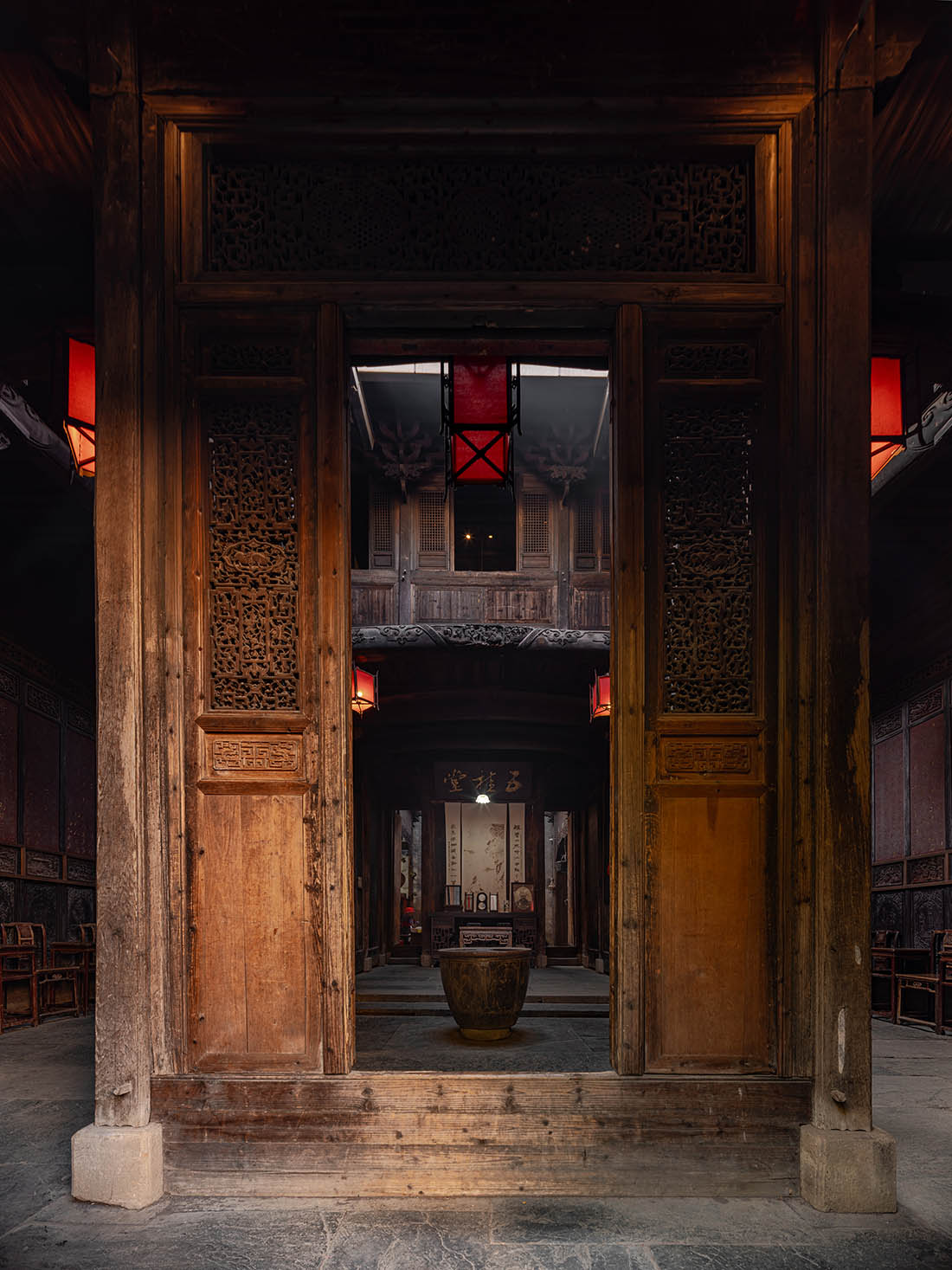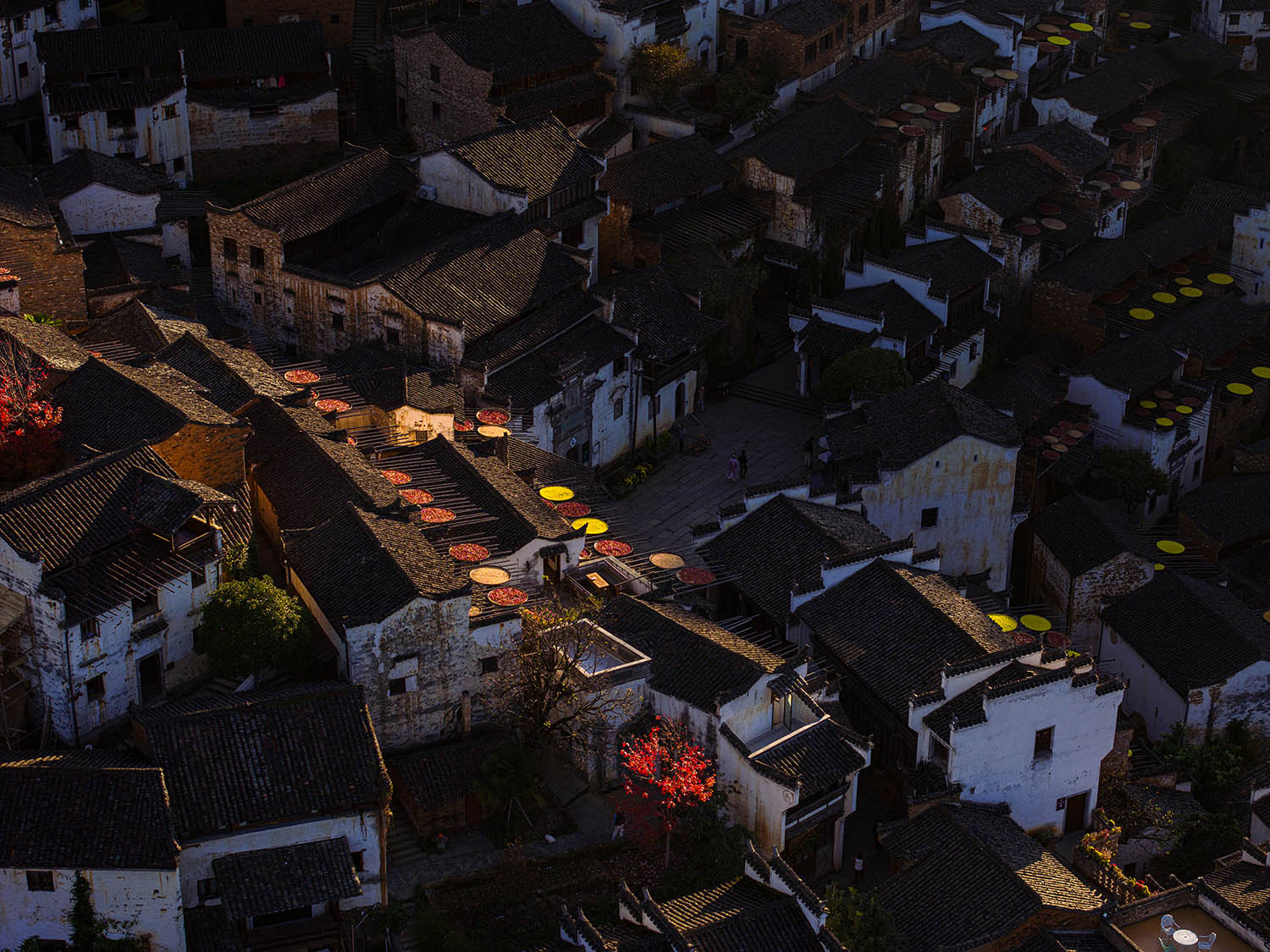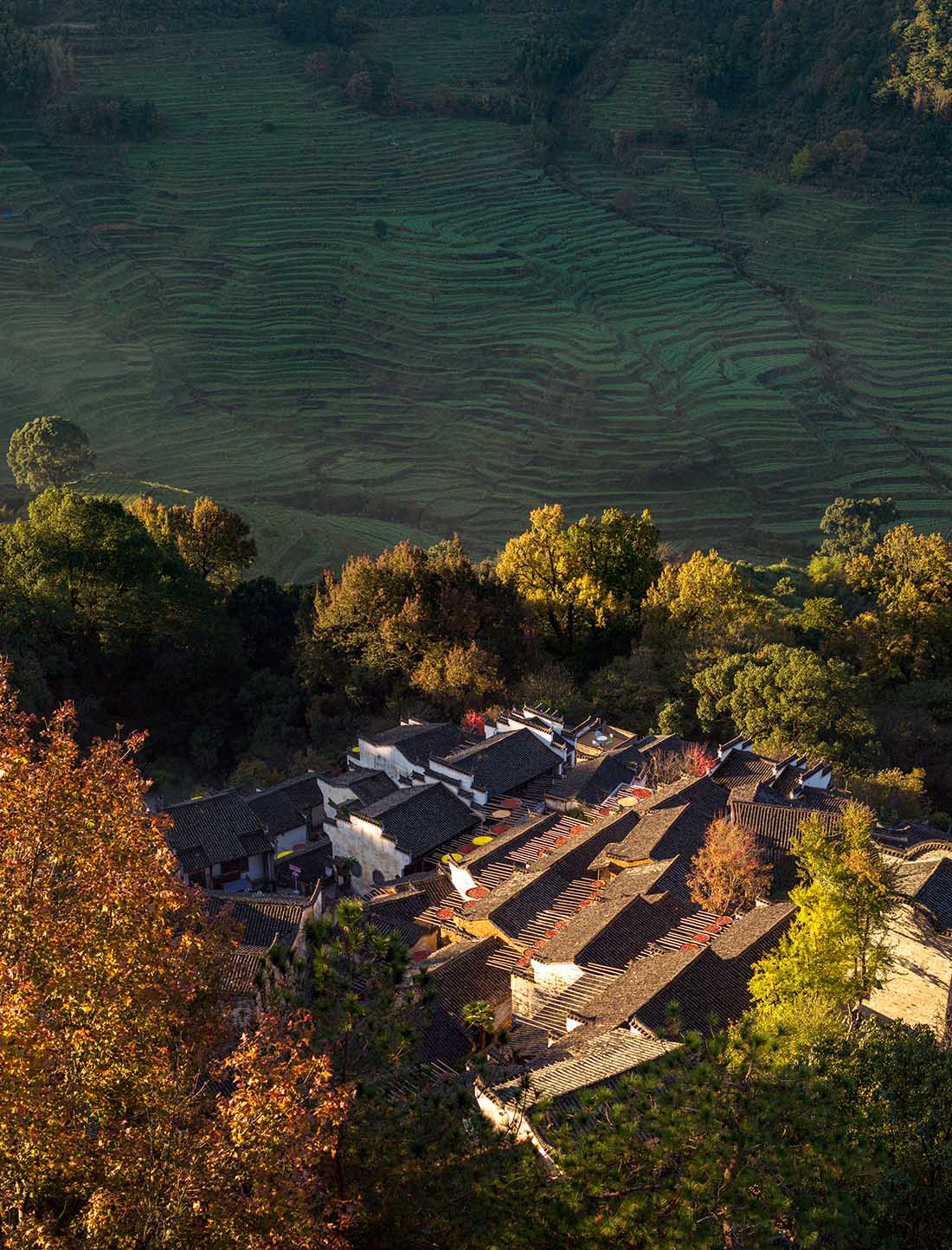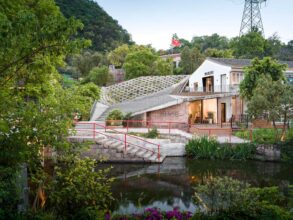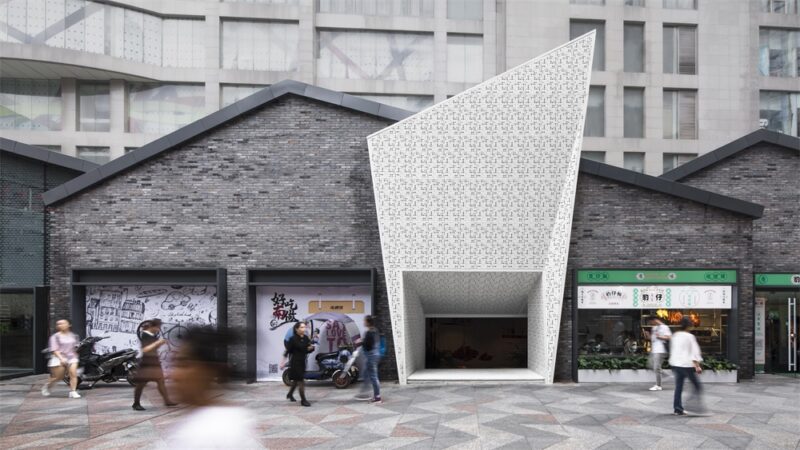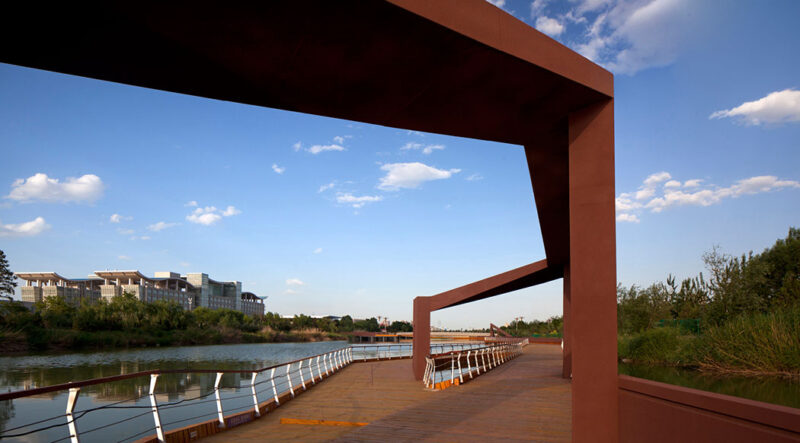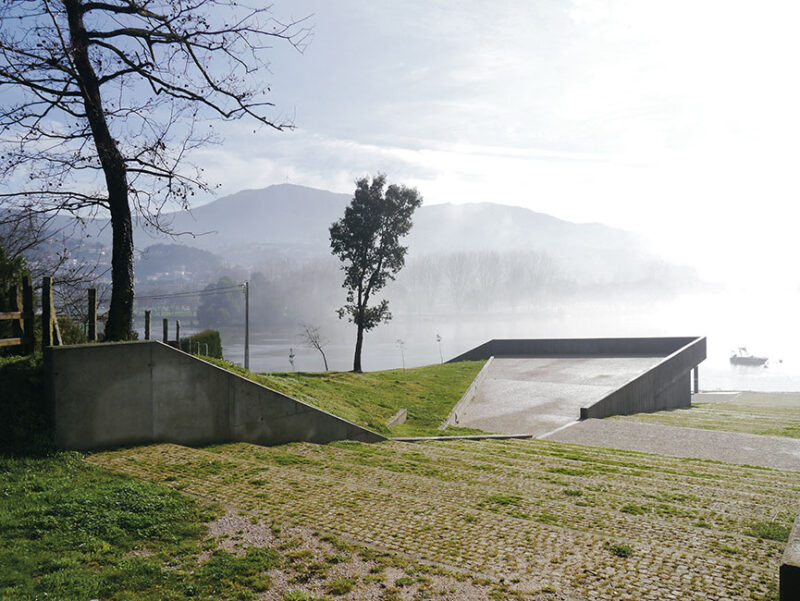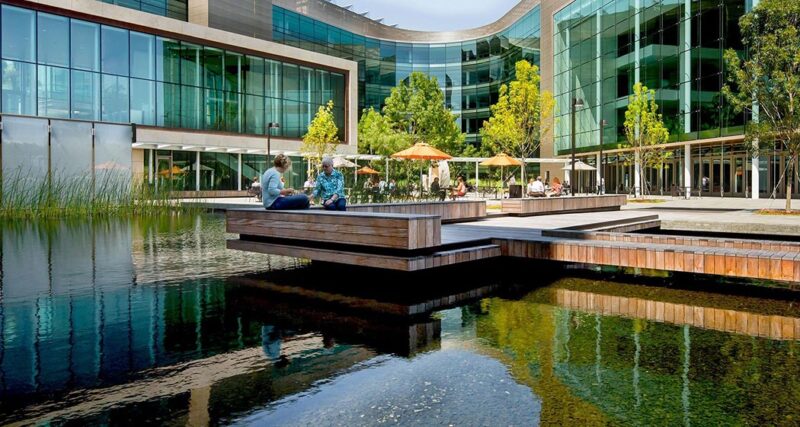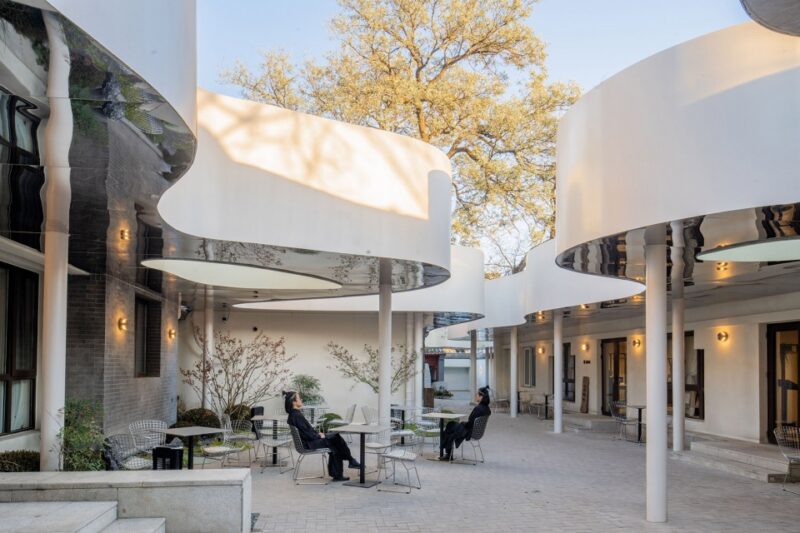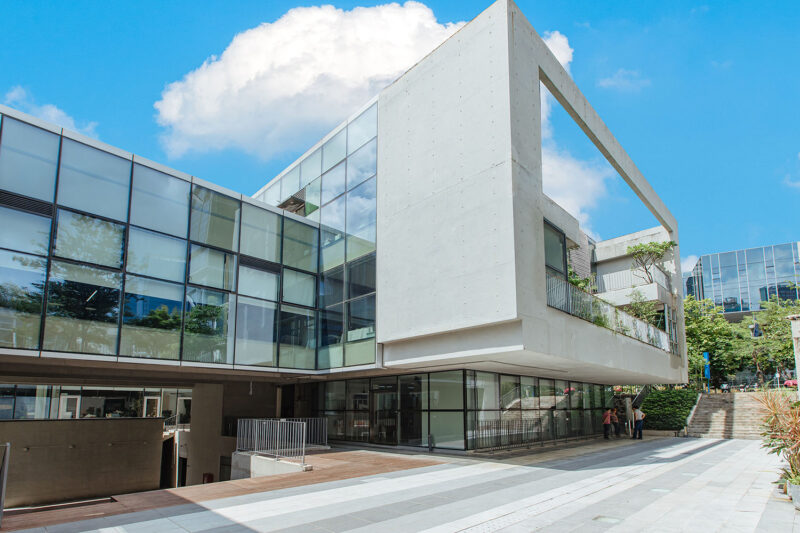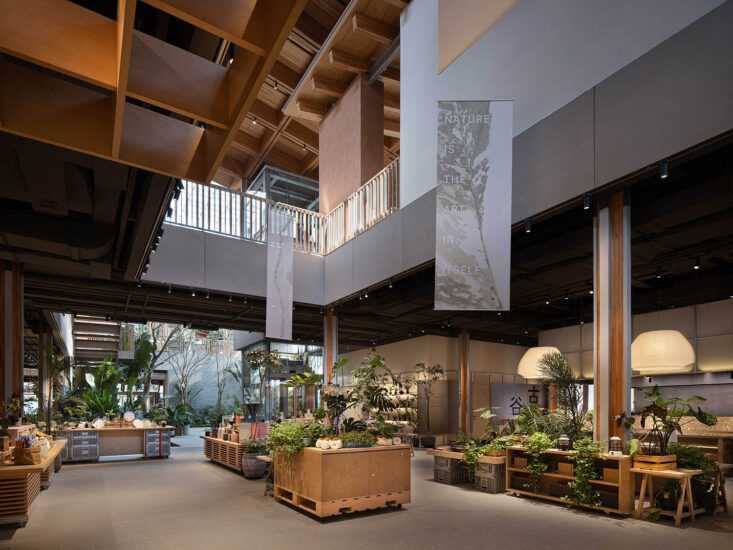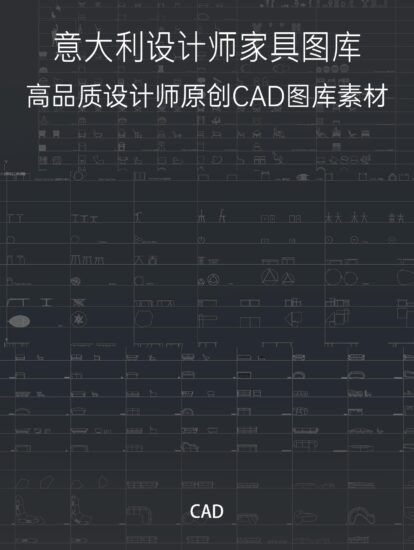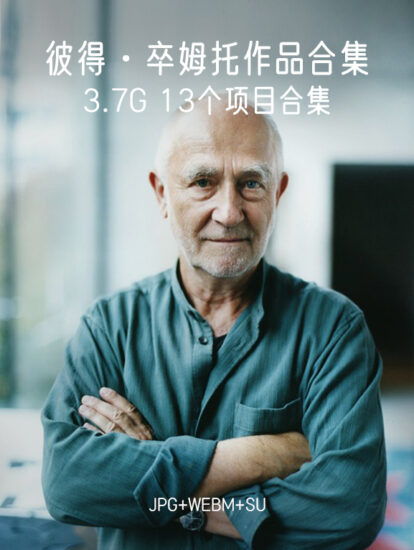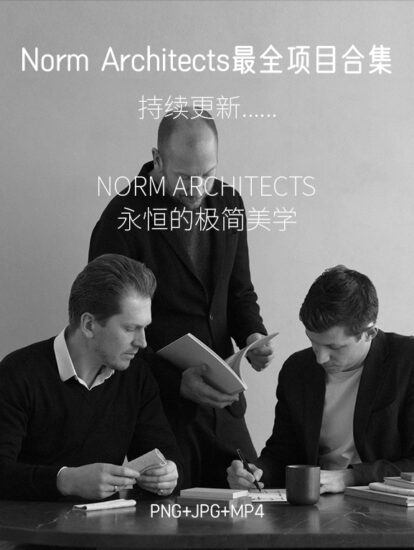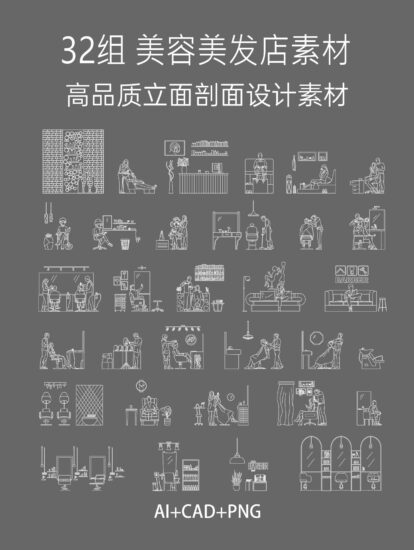村莊文化|一磚一瓦,尋回鄉愁,婺源篁嶺營造記
Renovation of Huangling Ancient Village by Wuyuan Village Culture Media Co., Ltd.
A Tale of Rural Renewal: Each Brick and Tile Evokes Nostalgia
∇ 攝影:SFAP Photography: SFAP
“徽之為郡,在山嶺川穀崎嶇之中。”地處古徽州的婺源篁嶺正如古書所述,依山而建,“掛”於崖上。這座近600年的徽州村落,建築隨地勢自由生長,與自然融合一體。
As recounted in ancient books, Huizhou was a region situated amidst rugged mountains, rivers, and valleys. Huangling Village, situated within Wuyuan County in northeastern Jiangxi, which was historically a part of Huizhou, lies a nearly 600-year-old settlement constructed upon mountainous terrain and perched on cliffs. In this village, the buildings organically grow with the landscape, seamlessly integrating with nature.
猶在三月春,百畝梯田的油菜花海映襯之下,大美不言,觸動“質性自然”的共通情感,入選了UNWTO聯合國世界旅遊組織「最佳旅遊鄉村」,並亮相國際文化盛事法蘭克福書展。
Each March, the village becomes particularly enchanting with the magnificent backdrop of a sea of blooming rapeseed flowers covering an extensive area of terraced fields. The indescribably beautiful sight evokes a universal sense of awe towards the natural world. In 2023, Huangling was selected as a “Best Tourism Village” by the United Nations World Tourism Organization and was exhibited at the world-class cultural event Frankfurter Buchmesse.
∇ 攝影:SFAP Photography: SFAP
如何讓這座破敗的古村煥發出新的生機?
為了回答這個問題,村莊文化團隊,在篁嶺的山野村舍中耕耘雕琢了15年。
How to breathe new life into this decrepit, ancient village?
For 15 years, the team at Wuyuan Village Culture Media Co., Ltd. has tirelessly pursued this question, devoting their time and energy to the revitalization of Huangling Village.
如今深具代表性的徽派古村落,卻曾是幾乎被拋棄的荒村:旱季缺水,雨季洪澇,村舍破敗,人去樓空。篁嶺的涅槃,凝縮著村莊文化團隊在山野村舍中持續耕耘的15年。
Once desolate and neglected, Huangling Village struggled with water scarcity during the dry season, flooding during the rainy season, dilapidated houses, and a dwindling population. Now, it stands as an iconic ancient village characterized by Hui-style architecture — a testament to the relentless efforts of the project team over 15 years in restoring its built environment.
一群人,紮根鄉土,用時間和經驗,不斷反複打磨雕琢一座古村。在流量至上求新求快的時代,顯得如此格格不入,但或許正因長期主義之下的拙與執,方能雕琢出獨一無二的經典。
This group of people, deeply rooted in rural construction, has devoted countless hours in enhancing and revitalizing an ancient village. In an era dominated by social media, speed, and ever-changing trends, their efforts may appear out of place. However, it is their methodical and long-term commitment that has crafted an iconic destination with sustained development.
∇ 攝影:SFAP Photography: SFAP
壹章 新生
從衰敗的百年村落到“最美鄉村”
Chapter I Rebirth
Evolving from a desolate century-old village into one of the “Most Beautiful Villages”
在90年代,第一次走入村莊文化創始人、篁嶺總設計師汪萬斌視野中的,完全是另外一番景象。這座古村建在山間陡坡之上,房屋零落參差,交通極為不便,村內可用地十分稀少,可謂“地無三尺平”。秋冬季節村民生活嚴重缺水,而汛期因街巷排水不暢,山體滑坡頻發,篁嶺逐漸淪為一個空心村,梯田拋荒,房屋倒塌,文脈斷絕。
In the 1990s, when Wang Wanbin, the founder of Wuyuan Village Culture Media Co., Ltd. and the chief designer behind the revitalization effort, first set foot in Huangling Village, he encountered a radically different landscape from what it appears nowadays. This ancient settlement, perched precariously on a steep mountainside, presented a disjointed picture. Houses were scattered across the terrain, transportation was severely hindered, and the available land within the village was severely limited, barely affording a flat ground to stand on. Villagers endured severe water scarcity during autumn and winter, and the rainy season brought frequent landslides due to inadequate drainage systems. As a result, Huangling gradually became an empty village, with its terraced fields left to decay, houses collapsing, and its rich cultural heritage lost to neglect.
∇ 改造前的篁嶺 © 婺源縣村莊文化傳媒有限公司
Huangling Village before renovation © Wuyuan Village Culture Media Co., Ltd.
自小習畫的汪萬斌,因采風寫生而走遍這裏,別人眼中衰敗的古村,於他而言卻有著獨到的美:這座掛在山間的村落,擁有原生態的自然景觀,並保留了不少傳統徽派建築風貌的古民居。這些獨一無二的文旅條件與不忍傳統村落日趨衰敗的那份鄉愁,讓汪萬斌相信篁嶺的可能性,全然投身到村落的保護與改造之中。
Wang Wanbin has been immersed in the world of painting since childhood, and it was this passion that led him to encounter Huangling, where he explored for inspiration in his drawings. To him, this ancient settlement, perched precariously on the hillside, offered a unique beauty that others might overlook, with its unspoiled natural scenery and authentically preserved ancient houses. Recognizing the cultural and touristic appeal of Huangling and driven by a profound nostalgia for the traditional village confronting deterioration, Wang Wanbin devoted himself to conserving and rejuvenating this extraordinary village.
∇ 圖一:篁嶺曬秋 © 汪萬斌 Shaiqiu in Huangling © Wang Wanbin
圖二:婺源寫生 © 汪萬斌 A sketch of Wuyuan © Wang Wanbin
機遇出現在2009年,當地政府正式編製了篁嶺村整體搬遷安置規劃,由婺源縣鄉村文化發展有限公司出資對篁嶺村進行整體搬遷,汪萬斌作為合夥人之一,參與其中。基於同濟大學編製的《婺源篁嶺民俗文化村發展規劃》,他帶領村莊文化團隊,展開篁嶺古村的整體設計和施工。
In 2009, a turning point arrived when the local government announced plans for the overall relocation and resettlement of Huangling Village. With funding from Wuyuan Village Culture Development Co., Ltd., Wang Wanbin joined forces with other partners to spearhead the project. Guided by the “Wuyuan Huangling Folk Culture Village Development Plan” drafted by Tongji University, he steered his team in the overall design and construction endeavors in the old Huangling Village.
∇ © 婺源縣村莊文化傳媒有限公司 © Wuyuan Village Culture Media Co., Ltd.
如此大尺度建造連帶多種訴求關係的複雜項目,相應的難度係數可想而知。一方麵,依山而建的獨特村落形式與山地地形的特殊性,為項目的設計施工帶來極大挑戰。另一方麵,舊有屋舍眾多,再利用與拆除之間如何評估,拆改之後又如何保留原有的古村肌理?此外,如何引水上山解決古村長久以來的幹旱問題,汛期水土固化問題等等。
Such a large-scale project presented multiple challenges. The village’s unique mountainous terrain and scattered layout posed significant design and construction difficulties. Additionally, the presence of numerous old houses raised questions about the balance between restoration and demolition. How to preserve the essence of the ancient village while also improving its infrastructure? Furthermore, the long-standing water scarcity and flooding issues during the rainy season needed to be addressed.
項目從整體村落的規劃、建築的修繕營造,再到景觀環境的梳理規劃,都需要村莊文化一一攻克。
From the master planning of the entire village to the restoration of individual buildings and the meticulous landscaping, Wang Wanbin and his team faced numerous challenges.
∇ 圖一:篁嶺改造過程,崎嶇狹窄的山路無法讓大型工程設備上山,隻能肩扛手提 © 婺源縣村莊文化傳媒有限公司
During the reconstruction process of Huangling, the rugged and narrow mountain roads presented a challenge for transporting large engineering equipment. As a result, the only feasible option was to carry the materials on the shoulders of workers up the mountain. © Wuyuan Village Culture Media Co., Ltd.
圖二:篁嶺改造過程,修複改造對工程的挑戰遠比推倒重建大得多,村莊文化與匠人們緊密配合 © 婺源縣村莊文化傳媒有限公司
The restoration and renovation of Huangling is much more challenging than mere demolition and rebuilding. This task necessitates tight collaboration between the project team and local skilled artisans. © Wuyuan Village Culture Media Co., Ltd.
汪萬斌帶領團隊及當地匠人走遍古村的各個角落,調研、勘測、記錄、思考。在一線實踐,從在地特質入手,以現實為依據尋找設計思路與解決方案。基於篁嶺村的情況,開創性地製定“保環境、屋上山、貌還原”的整體建設方案;在整體規劃層麵,以村落主幹道“天街”為主軸,遵循“最小幹預”的原則,不做大拆大改,保留村落與自然交融的山居形式。
Wang Wanbin and his team, along with local craftsmen, conducted a comprehensive investigation, survey, recording, and contemplation of every aspect of the ancient village. The design ideas and solutions were figured out based on on-site practices and local conditions. They developed a pioneering overall construction scheme for Huangling Village which focused on “protecting the environment, building houses on the mountain, and restoring the appearance.” The master planning harnessed the village’s main road “Tianjie” (which means Sky Street) as the primary axis, and adhered to the principle of minimal intervention without extensive demolition and transformation, in order to preserve the original mountain living style that harmonizes with nature.
通過保護性建設與古建異地搬遷活化的方式,重塑傳統古村建築形製,融入當代村旅生活的功能與內容,從本質上將限製轉換為創新的條件,複現山居古村的自然稟賦與人文煙火氣。
Through protective construction, relocation, and revitalization of ancient buildings, the project team successfully reshaped the architectural environment of the traditional ancient village, seamlessly integrating the village with contemporary tourism. This transformative approach effectively turned constraints into opportunities for innovation, allowing for the revival of the natural resources and cultural heritage of this ancient mountain village.
∇ 攝影:SFAP Photography: SFAP
貳章 傳承
異地搬遷,老宅修複
Chapter II Inheritance
Relocation and restoration of old houses
天街作為篁嶺交通主道與遊覽主線,在改造初始麵臨著交通動線混亂,道路泥濘狹窄,原有建築陳舊破敗等諸多問題。為篁嶺營造最優的路徑體驗,這條村中“主幹道”的布局至關重要。
The reconstruction of Tianjie, the main traffic road and primary tourist route in Huangling, faced numerous challenges, including disorderly traffic circulation, narrow and muddy roads, and existing dilapidated structures. The planning of this pivotal path was vital for creating an optimal experience for visitors to the village.
∇ 改造前的天街,是村落裏一段狹窄泥濘的土路,地基鬆垮,崎嶇不平 © 婺源縣村莊文化傳媒有限公司
Before transformation, Tianjie was a narrow rugged muddy road in the village, with a loose foundation. © Wuyuan Village Culture Media Co., Ltd.
通過對老民居逐一排危與修繕,村莊文化將120棟原址民居修舊如舊,同時嵌入民宿、餐飲、展覽等完整業態功能。
The project team examined all old houses within the village, restoring 120 buildings to their former appearances while incorporating comprehensive modern business functionalities such as hospitality, restaurants, and exhibition spaces.
∇ 攝影:SFAP Photography: SFAP
超出對建築符號的表麵保留,汪萬斌認為,賦予老建築以新生,才是保留它們的最好方式。為此帶領團隊走訪古徽州各地,探尋保存完好的徽派古民居,通過異地保護重建、老屋“寄養”的形式,為篁嶺“引入”20餘座精美古民居。這些反映徽商精致生活的老宅,豐富了篁嶺老村原本缺失的建築典型性,使其成為婺源老建築密度最大的村落之一,亦是座沒有圍牆的古建“博物館”。
Wang Wanbin recognized that breathing new life into old buildings is the most effective way of preservation, rather than merely maintaining the architectural icons. He spearheaded visits all over the ancient Huizhou region to study well-preserved old homes, and introduced over 20 exquisite ancient houses from other places to Huangling through reconstruction and restoration efforts. These structures, emblematic of the refined lifestyle of ancient Huizhou merchants, have enriched the architectural fabric of Huangling Village, transforming it into a repository of ancient buildings without a parallel in Wuyuan, as well as an “ancient architecture museum” without enclosure walls.
∇ 攝影:SFAP Photography: SFAP
除了建築本身,建築周圍的環境梳理,道路、排水的考量與景觀設計的一體融合,都經過了設計建造團隊的緊密配合與精心規劃,以確保老宅的完善功能和可續保護。
In addition to the building structures, meticulous attention has been given to the surrounding environment, including road, drainage, and landscape design, to ensure holistic consideration. The close collaboration and careful planning of the design and construction team have ensured the comprehensive functionality and sustainable preservation of local historic dwellings.
∇ 傳統徽派民居采用磚木結構,村莊文化團隊與當地匠人們以傳統建造技藝複現 © 婺源縣村莊文化傳媒有限公司
Traditional Huizhou-style residences are constructed using brick and wood structures. The project team, alongside local craftsmen, reconstructed traditional Hui-style houses through traditional construction techniques. © Wuyuan Village Culture Media Co., Ltd.
∇ © 婺源縣村莊文化傳媒有限公司 © Wuyuan Village Culture Media Co., Ltd.
∇ 徽州古民居的精美雕花,在保護修複後得以再次綻放,攝影:SFAP
The sophisticated carvings adorning Huizhou-style ancient houses have been preserved and restored, breathing new life into their exquisite beauty. Photography: SFAP
新老交接的民居古建沿著地勢排布,交疊著構成天街極富空間體驗性與古村煙火氣的氛圍。與此同時,隱性融入現代化的照明設計與街區景觀優化,這條新生的古街與周圍環境渾然相融。
The harmonious coexistence of old and new houses, gracefully following the terrain, has fostered a rich spatial experience and a lively atmosphere in the ancient village. Moreover, the modern lighting and thoughtfully designed landscapes seamlessly integrate into the renewed ancient street, harmonizing it with the surroundings.
∇ 攝影:SFAP Photography: SFAP
古宅修複重建的過程中,汪萬斌帶領團隊與當地匠人們共同實踐,活化了一批傳統建造工藝,祖輩流傳的技藝得以傳承。而在傳承之上,更以新舊結合,藏新於古的方式,將新舊結構與材料結合運用,整合空間的現代化功能、使用體驗的舒適度與在地資源的聯結性。
Throughout the restoration and reconstruction of the ancient houses, Wang Wanbin led his team and local craftsmen in a collaborative effort, revitalizing traditional construction techniques and inheriting ancestral skills and wisdom. While inheriting traditions, they adeptly combined old and new structures and materials to meet contemporary functional needs, ensure comfortable experiences and integrate local resources.
∇ 攝影:SFAP Photography: SFAP
叁章 保護
依山而建,生態宜居
Chapter III Conservation
Built on mountains, a livable ecological village
建於山坡之上的篁嶺,村前和後山均被紅豆杉、楓香、香樟等千棵古樹簇擁,自然環境優渥,但也存在旱季缺水,雨季內澇甚至山體滑坡的危險。如何在建設開發的同時,保護當地山水,結合建築與既有景觀優勢,亦是村莊文化在篁嶺建設中的一大挑戰。
Situated on a picturesque hillside, Huangling is embraced by thousands of ancient trees such as yews, Chinese sweet gum trees, and camphor trees, creating a stunning natural environment. However, the village faces challenged such as water shortage during dry seasons, waterlogging, and landslides in the rainy season. Balancing the preservation of the local landscape with the architectural environment presented a significant challenge to the project team for the village construction.
∇ 攝影:SFAP Photography: SFAP
2017年6月,篁嶺遭遇洪災,村內多處山體滑坡造成大量植被衝毀,對環境帶來了難以修複的破壞。改造項目需要針對性地恢複水毀的植被和環境,加入防水與引水工程,完善基礎設施建設。
In June 2017, Huangling experienced devastating floods, leading to multiple landslides that caused extensive damage to the vegetation and environment. The subsequent renovation endeavors aimed to restore the water-damaged landscape through targeted solutions, including waterproofing and water diversion programs, as well as infrastructure improvements.
地質災害造成黃土碎石雍塞山穀,施工難度大,交通運輸非常困難。設計團隊化困境為機遇,巧妙利用滑坡後改變的地勢,就勢修建為篁嶺第二條極富特性的街道“花溪水街”。
Loess and gravel resulting from the geological disasters blocked the valley, which posed further challenges to construction and transportation. However, the design team seized this opportunity by leveraging the altered terrain after the landslides to create the distinctive “Huaxi Water Street” (which means Flower Stream Street), a second street with unique characteristics in Huangling.
∇ 攝影:SFAP Photography: SFAP
為了恢複水毀的植被和環境,設計團隊在防洪工程基礎上,采用傳統營造方式修複加固,排除可能的地質隱患,利用水利技術引水築溪,曆時兩年,根本性地解決了篁嶺多年所困的地質災害與水源匱乏問題。
To address the environmental damage caused by floods, traditional construction methods were employed to repair and reinforce flood-control engineering, mitigate geological hazards, and implement water conservancy techniques to redirect water and create streams. Over two years, these efforts fundamentally resolved long-standing geological disasters and water shortage issues in Huangling Village.
∇ © 婺源縣村莊文化傳媒有限公司 © Wuyuan Village Culture Media Co., Ltd.
在解決場地基礎問題之後,利用地形和水流優勢沿岸造景,對村內道路交通進行科學改造與梳理,依地形高差將不同大小的房屋錯落排布在花溪兩邊,人工開挖孔樁水泥澆築基礎,預埋各種管線,留好排水排汙口。
With the site foundation issues resolved, strategic landscaping was undertaken along the stream, accompanied by the scientific reorganization of road traffic within the village. Houses of varying sizes were strategically positioned on both sides of the Huaxi Stream to align with the natural terrain elevation differences, with foundations excavated and fortified with cement. Additionally, various pipelines were buried and drainage and sewage outlets were set up in advance.
∇ © 婺源縣村莊文化傳媒有限公司 © Wuyuan Village Culture Media Co., Ltd.
遵循可持續發展的原則,設計最大限度地實現環境友好和資源循環利用,將修整的痕跡降至最低。充分利用場地已有的材料如紅土、毛石等,結合傳統的建築工藝,構築古樸靈動的多維度風景,與整個村落的氛圍相協調。
Adhering to the principles of sustainability, the design prioritized environmental friendliness and resource recycling while minimizing the footprint of renovations. Existing materials such as red clay and rough stone were maximized through traditional construction techniques to create a simple yet sophisticated multi-dimensional landscape that harmonizes with the village’s overall ambiance.
景觀、建築、室內外一體化設計,古村落得以在“原真性”保護與“帶動性”開發之中,達到多元而統一的價值平衡。
The integrated design approach encompassing landscape, architecture, interior, and exterior elements has enabled Huangling to strike a balance between preserving its authenticity and driving development.
∇ 攝影:SFAP Photography: SFAP
肆章 複現
挖掘在地鄉土民居,守住一方鄉愁
Chapter IV Reproduction
Delve into local vernacular houses, and resonate with nostalgia
作為入選“世界最佳”的中國鄉村振興的標杆項目,不止於保護修繕、融入現代功能、還原自然山居環境,村莊文化更通過內涵挖掘、文化灌注、業態整合等方式,提升篁嶺的人文價值和鄉村產值,而村民們已然成為這一鄉建進程中的參與者和共享者。
The project has been widely recognized as a benchmark initiative for successful rural revitalization in China. Its scope extends beyond preserving, modernizing, and restoring the natural mountain living environment. It also places significant emphasis on unearthing cultural significance, infusing cultural essence, and integrating sustainable business models. The overarching goal is to enhance both the humanistic and economic value of the village. Local villagers have been actively involved in the construction and development efforts, thereby sharing the benefits of the village’s renewal.
成長於婺源農村的汪萬斌相信,真正為當地社區創造福祉,讓鄉人找回身份認同與文化自信,才是鄉村振興和鄉旅建設的終極意義。
Wang Wanbin, a native of rural Wuyuan, advocates for the true essence of rural revitalization and tourism development, which lies in benefiting the local community and reinstating the cultural identity and confidence of rural residents.
∇ 攝影:SFAP Photography: SFAP
在徽州的曆史人文調研上,村莊文化傾注大量的時間和精力,深入研究傳統民居樣態。老宅異地複建與修複涉及到了諸多的建造難題,與當地匠人通力合作,以極致匠心挖掘徽派建築群的傳統營造技藝,保護並修複精美的建築磚雕及木雕。
The project team conducted extensive research of the historical and cultural contexts of ancient Huizhou, particularly in traditional house styles. The reconstruction and restoration of old houses in Huangling involved collaboration with local craftsmen to overcome all kinds of construction difficulties, striving to delve into traditional Huizhou-style construction and preserve and repair the sophisticated architectural brick and wood carvings.
∇ 攝影:SFAP Photography: SFAP
亦挖掘複現了釀酒、榨油、竹編等當地傳統手工藝,將古村原有的生產加工作坊如水碓、油榨等,結合體驗動線糅合成為具有記憶點的景觀節點,為村落空間增添人文意趣。而大到一條街道的設計建造,小到一間民居裏器物的展陳,背後都是設計團隊常年紮根鄉土,對當地鄉村文化民俗的理解、提煉與再現。
Furthermore, efforts were made to revive local traditional handicrafts such as brewing, oil pressing, and bamboo weaving, which are integrated into landscape nodes to enrich the experience with cultural significance. Whether it is the meticulous design and construction of a street or the thoughtfully curated display of utensils in a folk house, each aspect serves as compelling evidence of the design team’s extensive experience and deep connection to rural life. Every detail of the project reflects their understanding, refinement, and revival of local rural folk culture.
∇ 攝影:SFAP Photography: SFAP
民居也以古村文化元素為主線,遵循地域民俗文化特征,在保護基礎上充分利用遺留閑置的生產、生活資料等資源,再現當地民俗文化。
The restoration of folk houses in Huangling emphasized the preservation of ancient village’s cultural elements, aligning with regional folk culture characteristics and utilizing existing unused resources such as old utensils and furniture to reproduce local traditions.
“曬秋”這一在贛北多有分布的農俗,藉由篁嶺當地獨特的山居建築形態與綿延有序、五彩斑斕的豐收曬秋場景,形成了篁嶺獨一無二的名片。農產品、非遺工藝、傳統種植等地方業態,為原住民創造新的就業,支撐穩定的原生態社區模式。
The distinctive farming custom of “Shaiqiu” (or “drying crops in the autumn sunshine”) prevalent in northern Jiangxi, has become synonymous with Huangling, showcasing the unique mountain dwelling architectural form and vibrant harvest scenes. This has not only created employment opportunities through local businesses related to agricultural products, intangible cultural heritage crafts, and traditional farming but also fostered an authentic local community model.
∇ 攝影:SFAP Photography: SFAP
本土化的語言天然具備可辨識的特色,與傳統和文化產生更深層次的連接。“記得住鄉愁,看得見未來”,這會是鄉村建設和發展的綿綿不絕的內生力量。
The utilization of vernacular languages with identifiable characteristics has fostered a deeper connection with tradition and culture, serving as an intrinsic driving force for rural construction and development.
∇ 攝影:SFAP Photography: SFAP
從設計到建造,從傳承到創新,從挖掘到複現,村莊文化用十五載光陰的縱深設計實踐,保留了篁嶺這座百年村落的“形”,更藉由古村價值賦能,將傳統鄉土文化的“魂”傳承了下來。這座涅槃重生的徽派古村落,讓每一個來到這裏的人們,拾起鄉愁,也為鄉村振興與傳統村落的現代化村旅開發,提供了一個全球普適的生動範例。
Engaging in all aspects of design, construction, inheritance, innovation, excavation, and reproduction, Wang Wanbin and his team’s fifteen years of dedicated practice have successfully retained the essence of Huangling, empowering it with the value of an ancient village while preserving the traditional local culture. This revitalized ancient village can evoke a sense of nostalgia and belonging in all who visit. It serves as a remarkable demonstration of rural revitalization and modern village tourism development, offering a globally applicable model for traditional villages.
∇ 攝影:SFAP Photography: SFAP
項目信息
項目名稱:篁嶺古村改造
設計單位:婺源縣村莊文化傳媒有限公司
項目設計&完成年份:2009至今
主創及設計團隊:汪萬斌、洪平、潘焰鑫、汪建泓
項目地址:婺源縣篁嶺景區
建築麵積:26272.54m2
項目攝影:SFAP
項目客戶:婺源篁嶺文旅股份有限公司
Project name: Renovation of Huangling Ancient Village
Design firm: Wuyuan Village Culture Media Co. Ltd.
Contact: 739079543@qq.com
Design & completion year: 2009 – ongoing
Design team: Wang Wanbin, Hong Ping, Pan Yanxin, Wang Jianhong
Project location: Huangling Scenic Area, Wuyuan County
Area: 26,272.54 m2
Photography: SFAP
Client: Wuyuan Huangling Cultural Tourism Co., Ltd.


